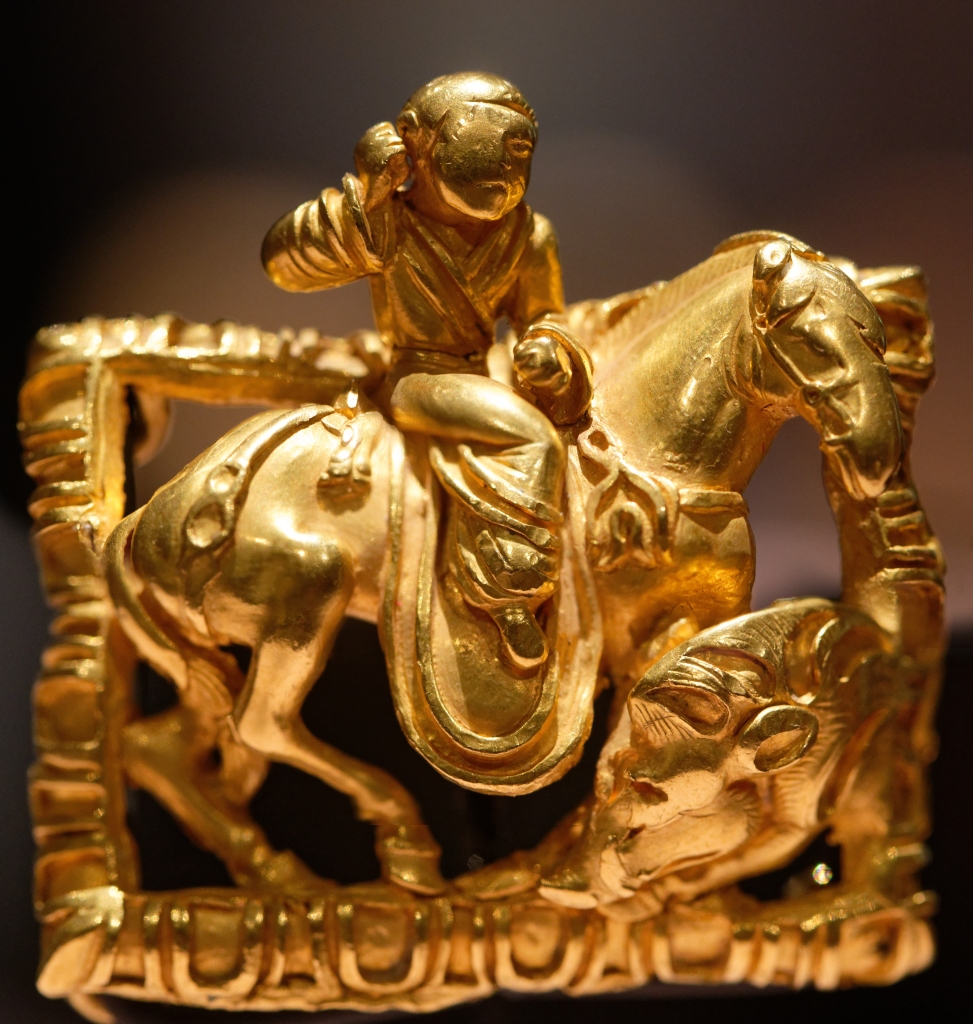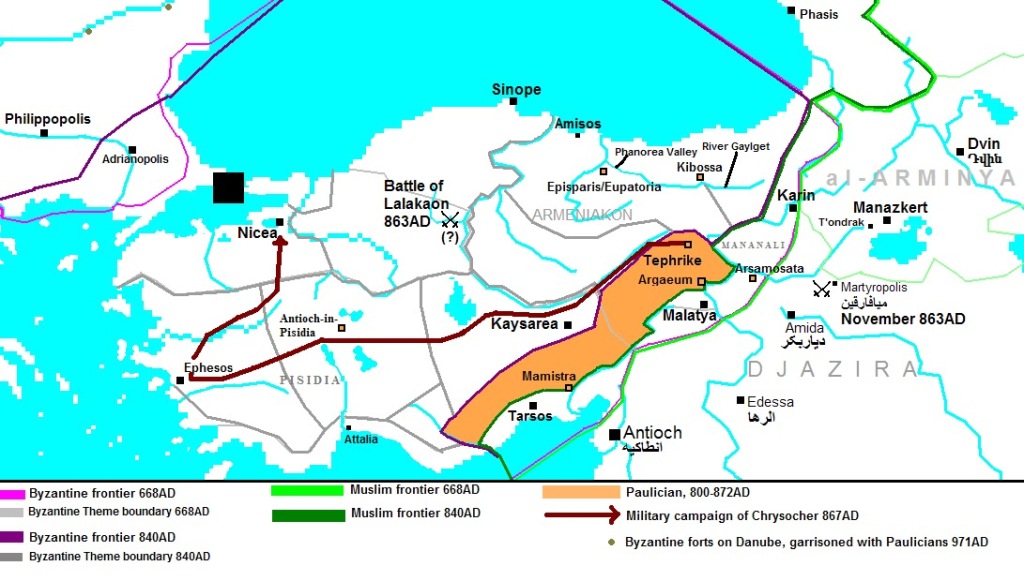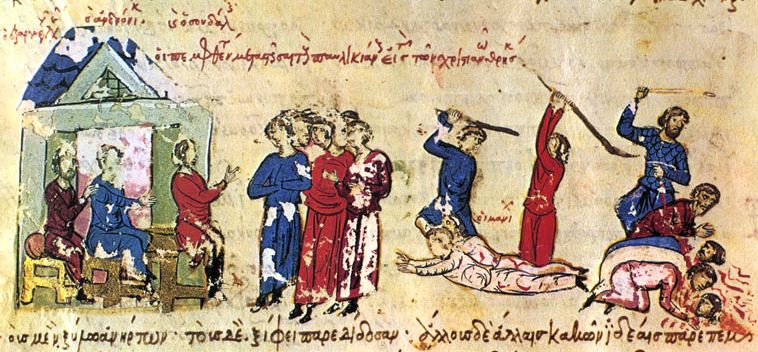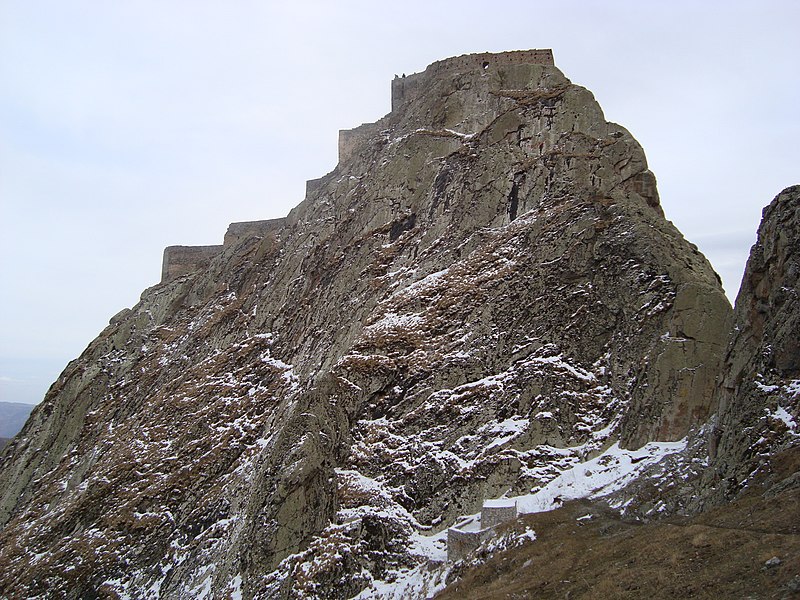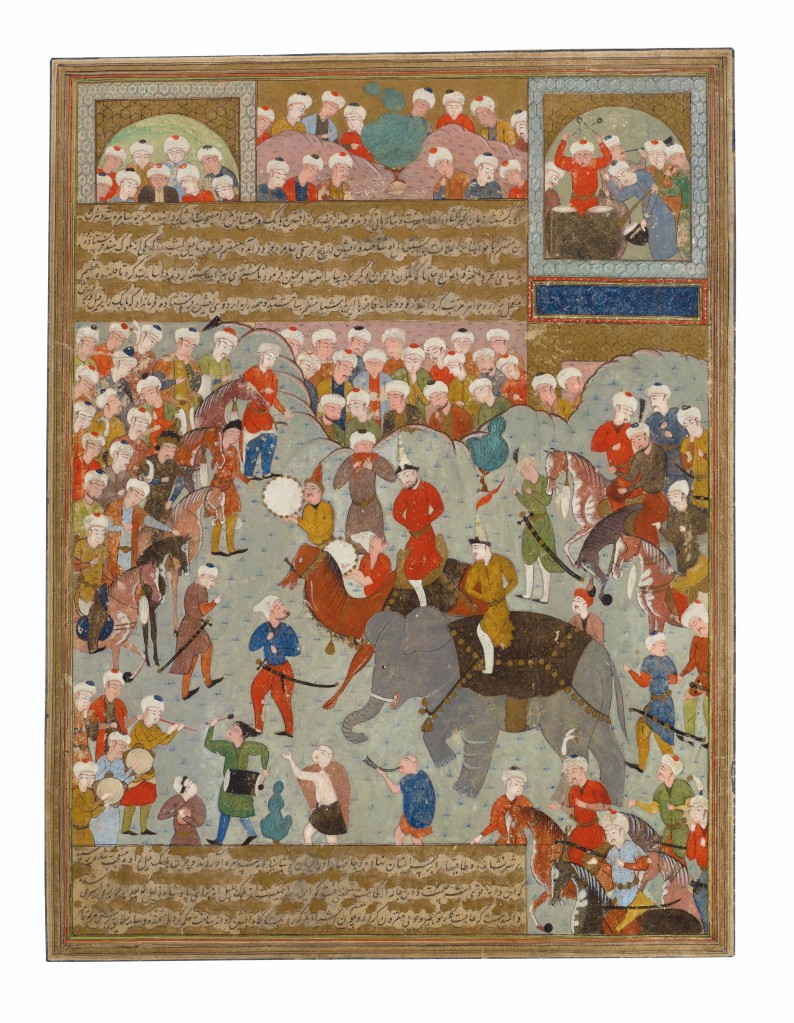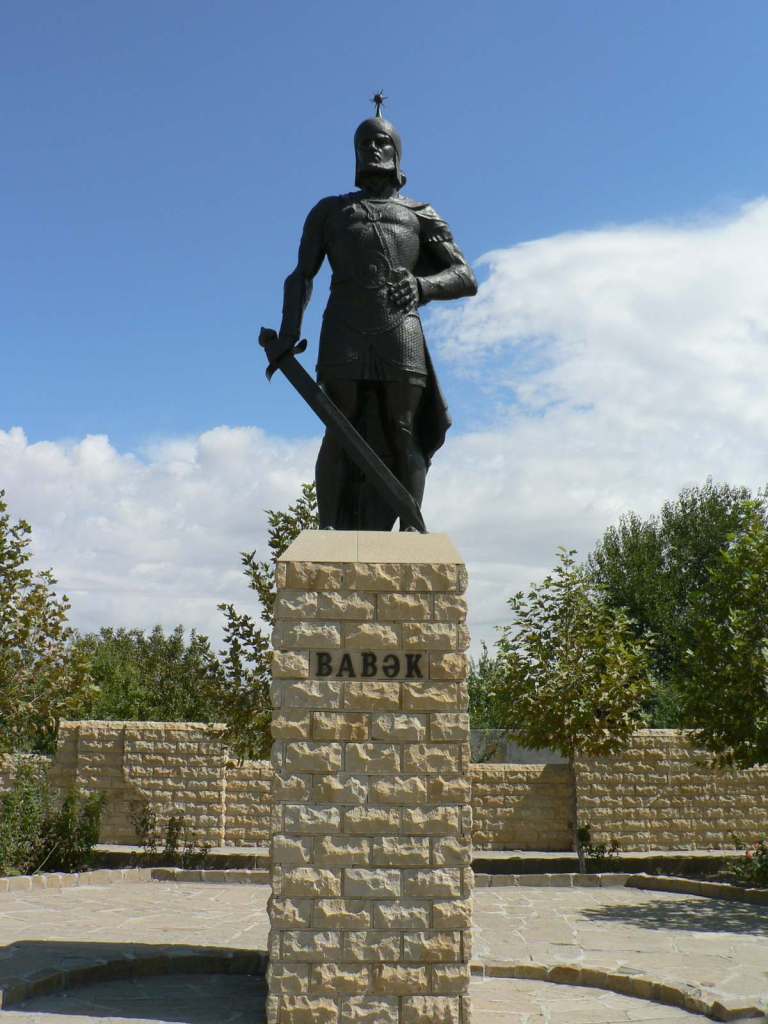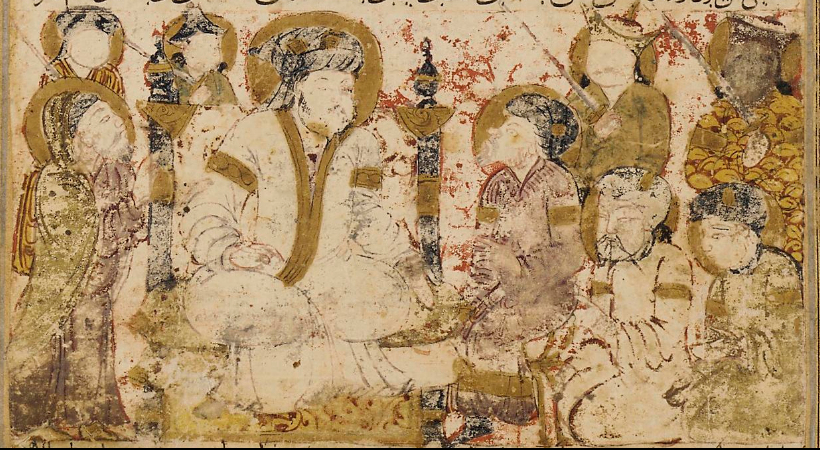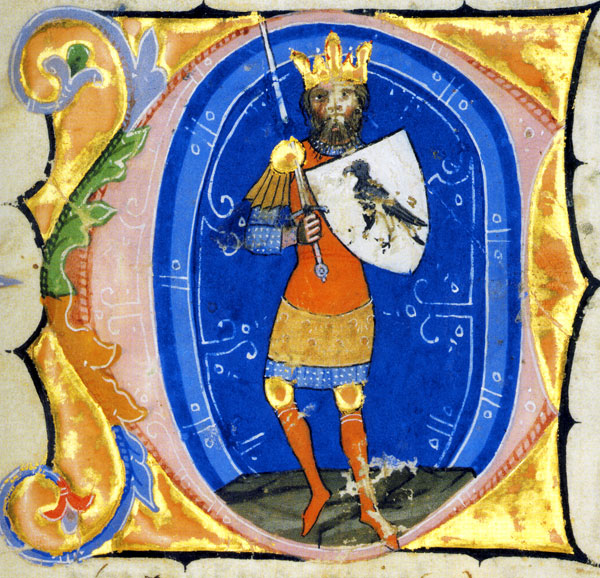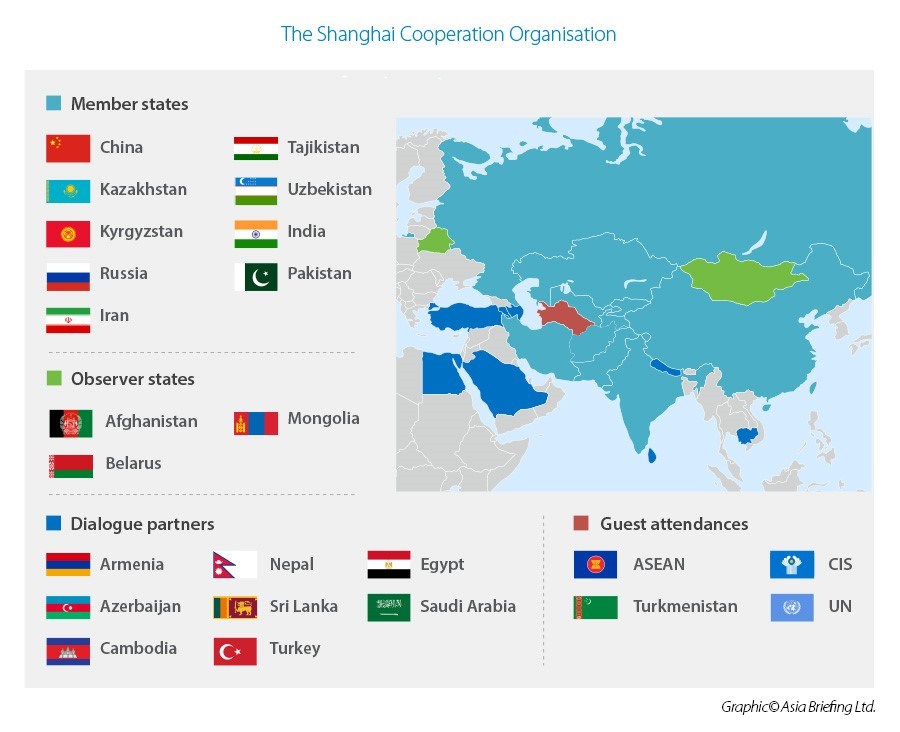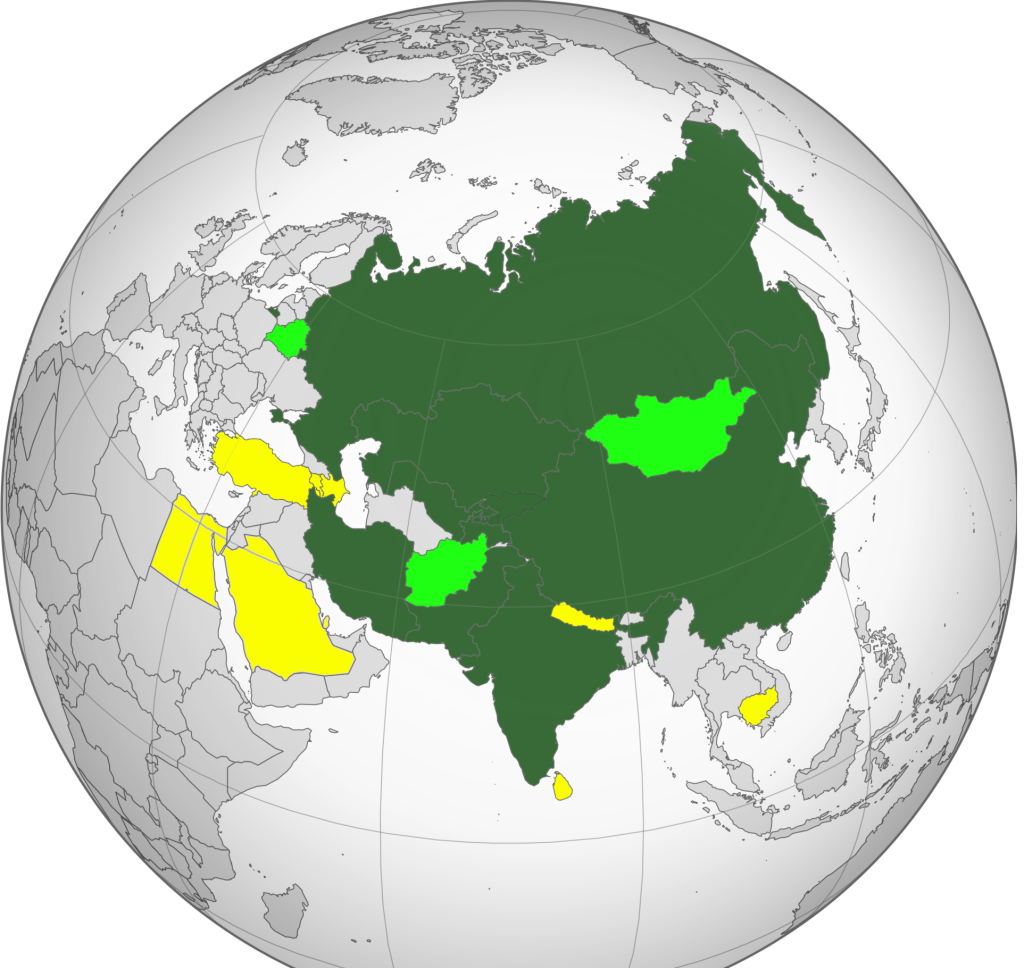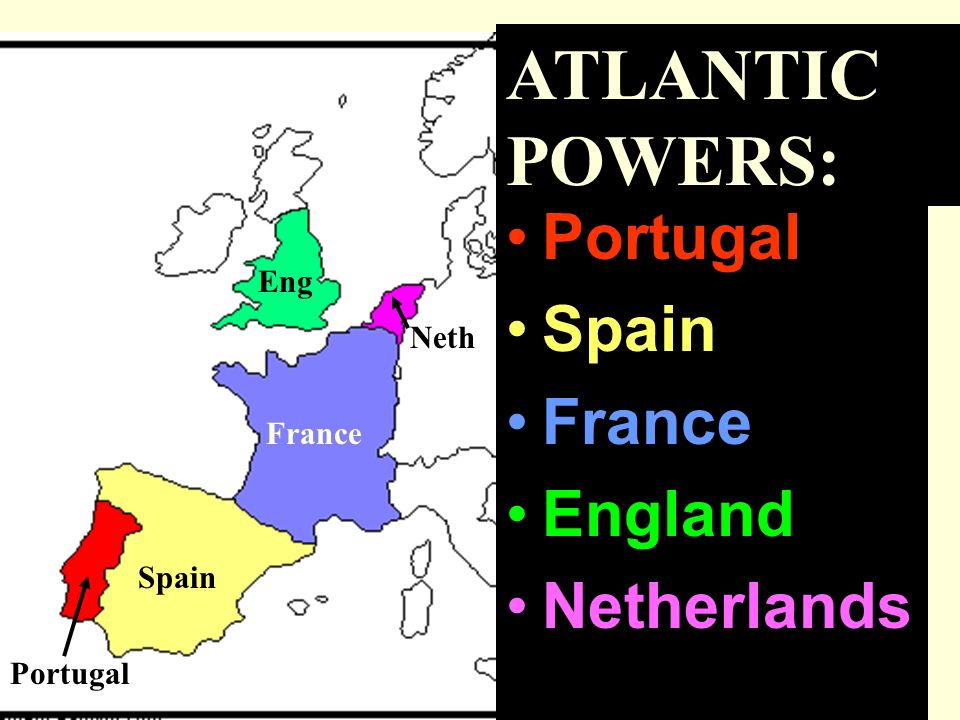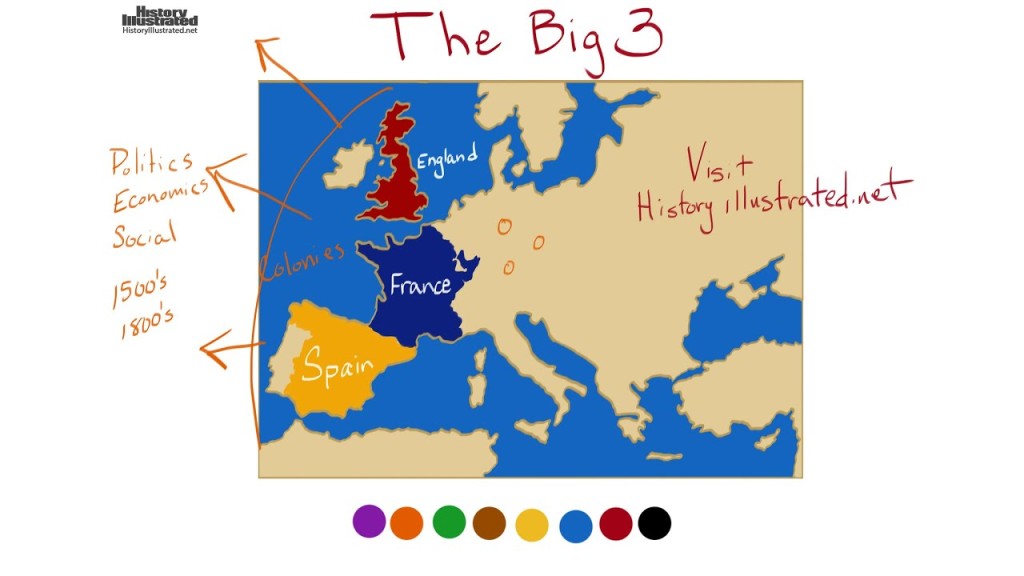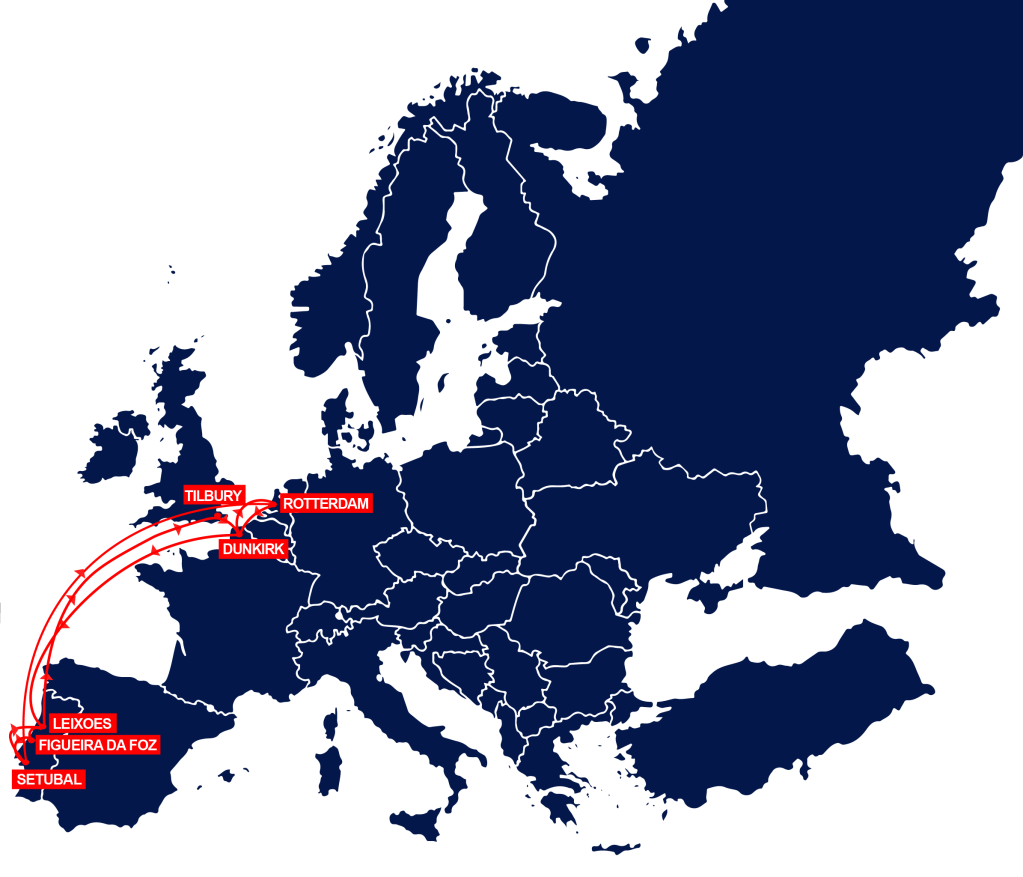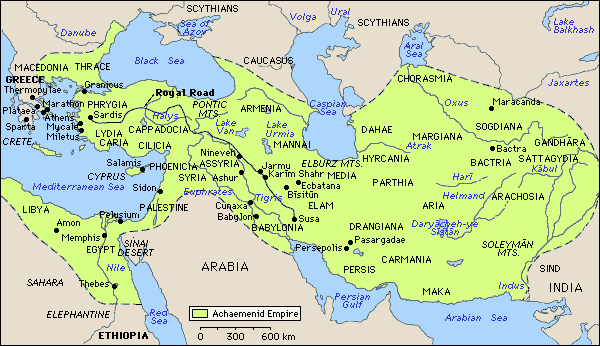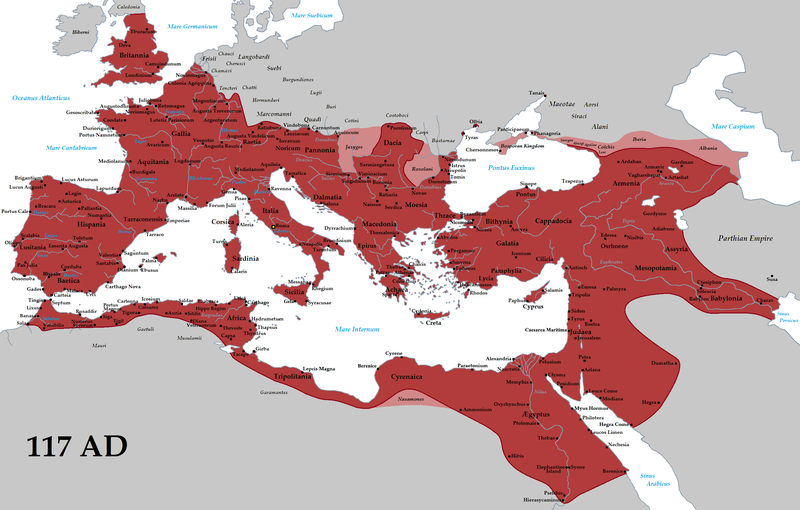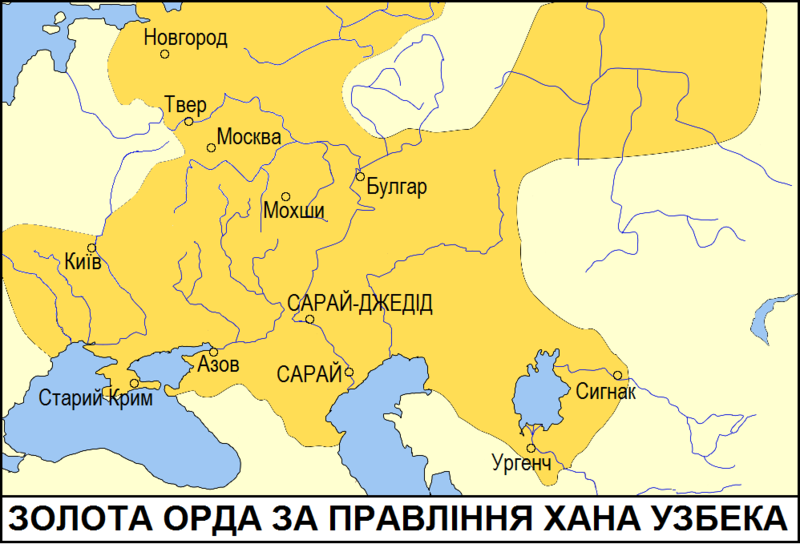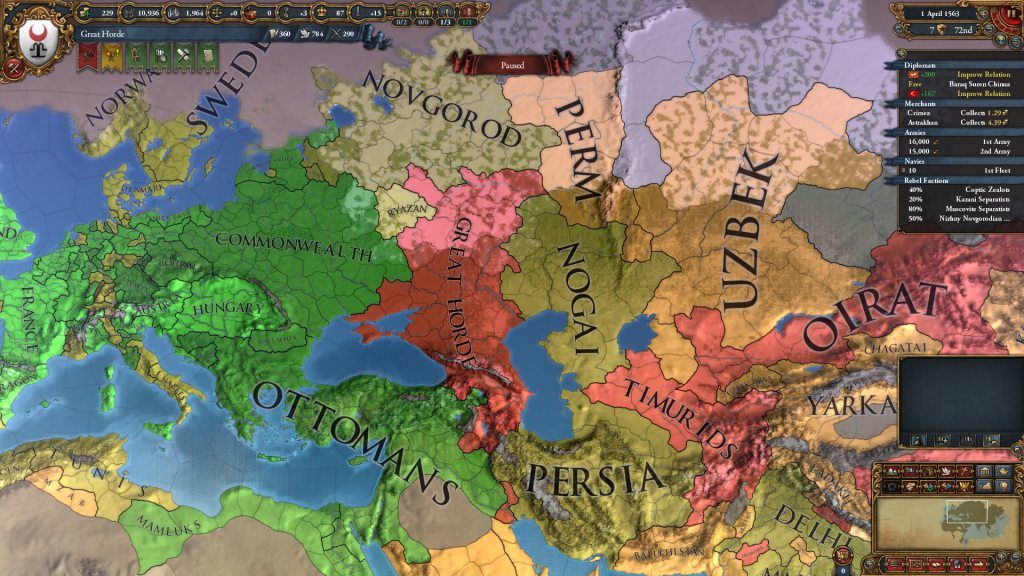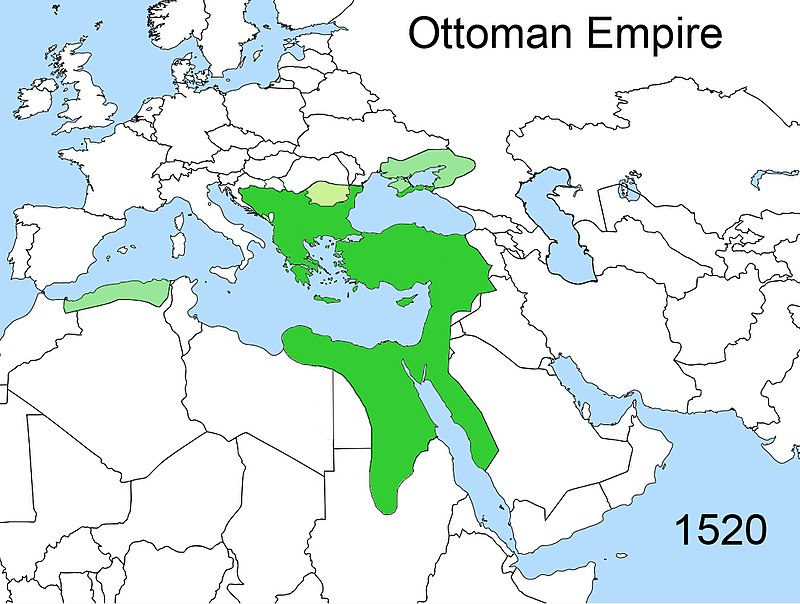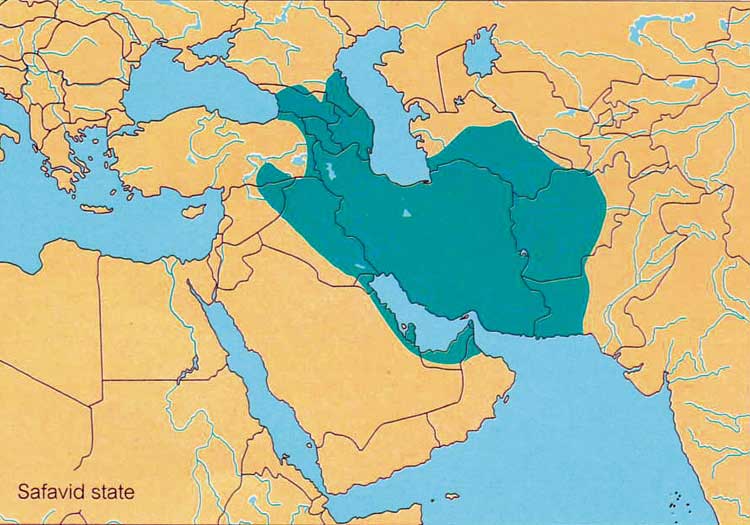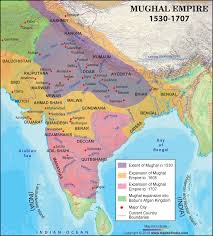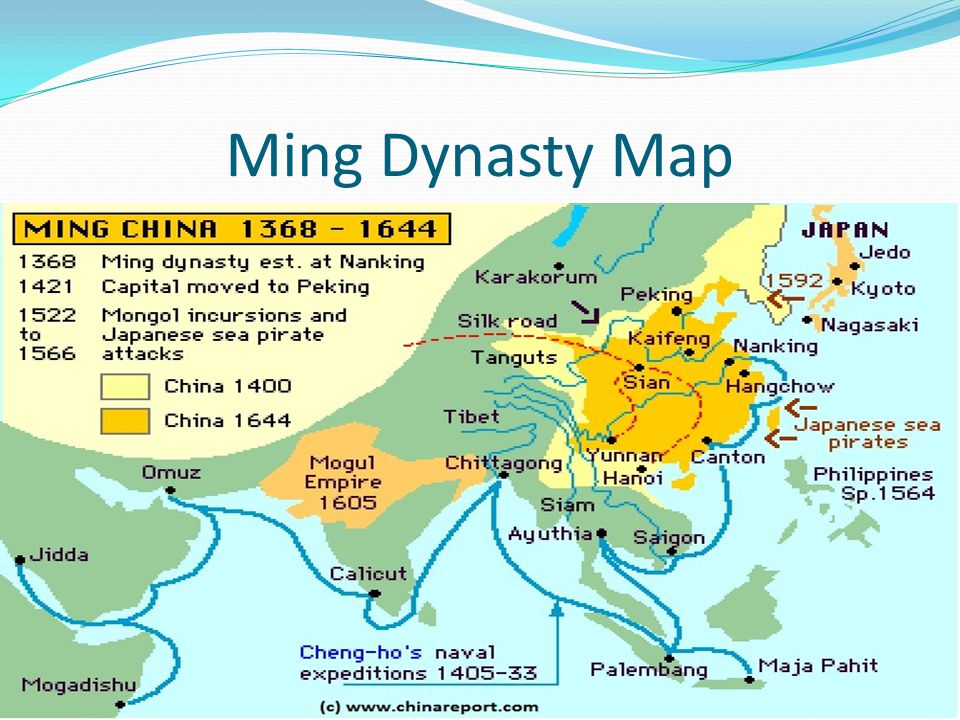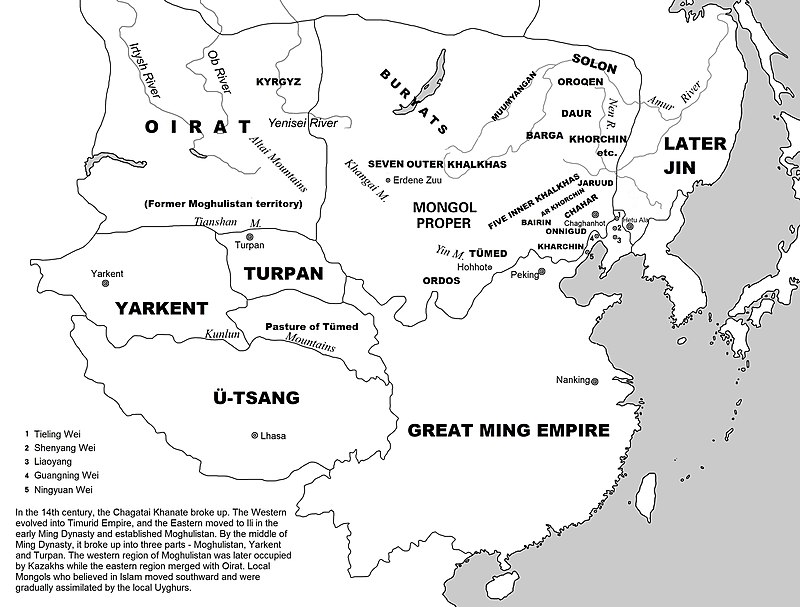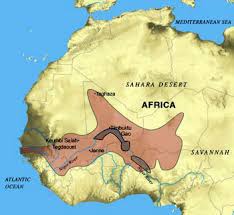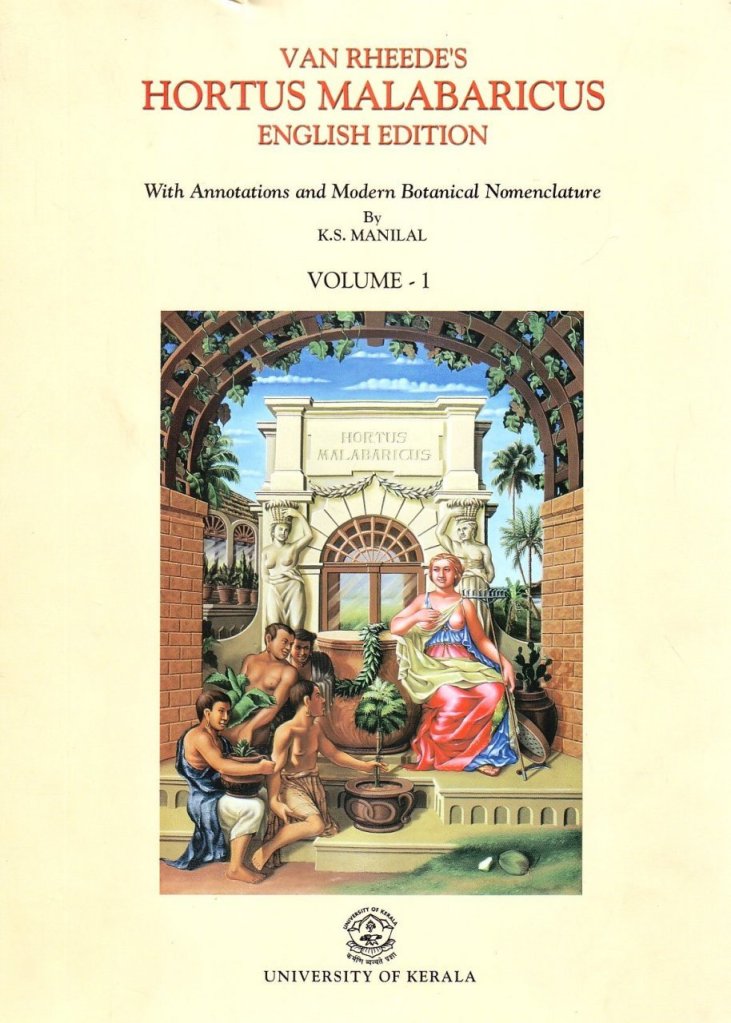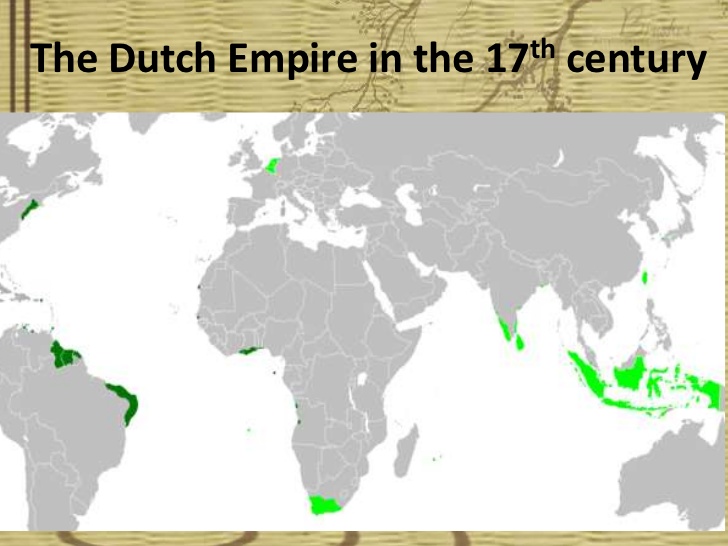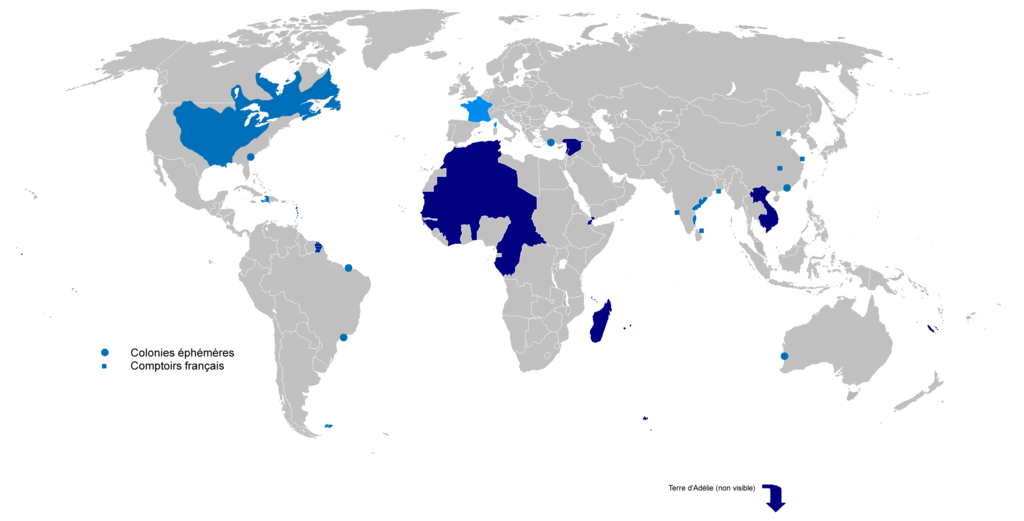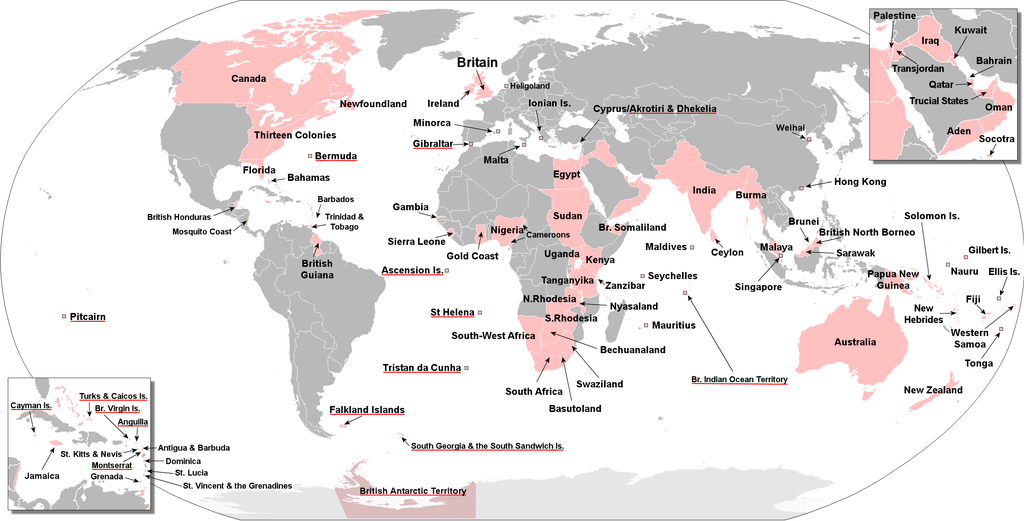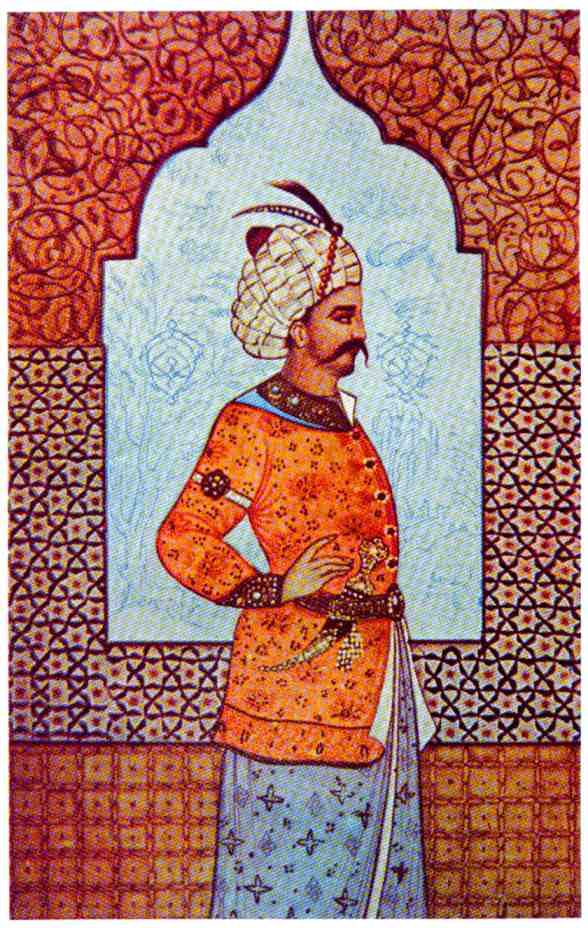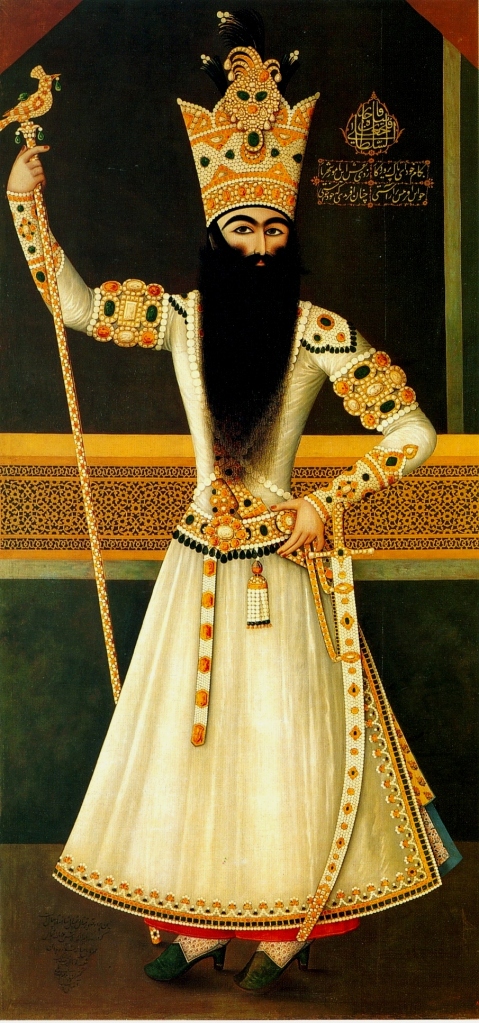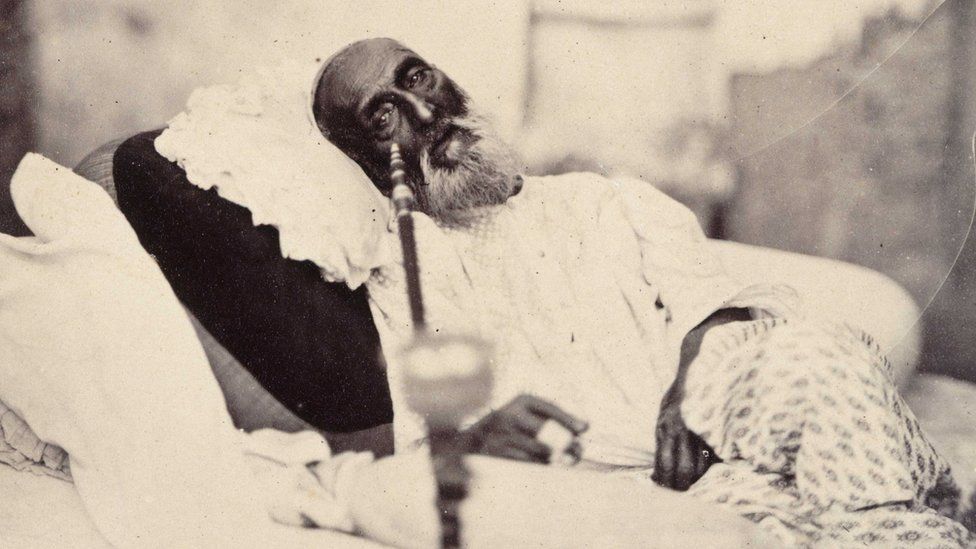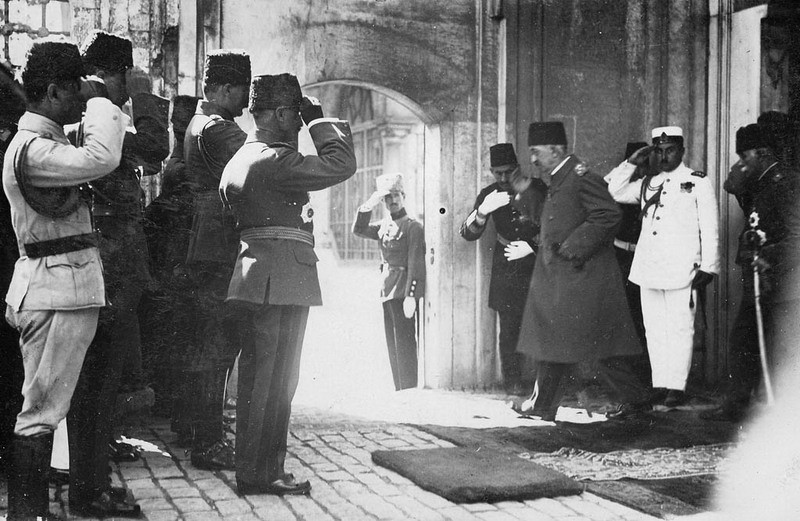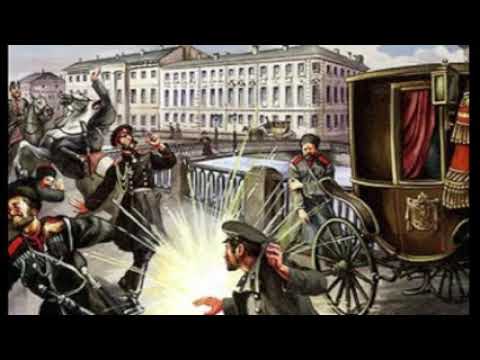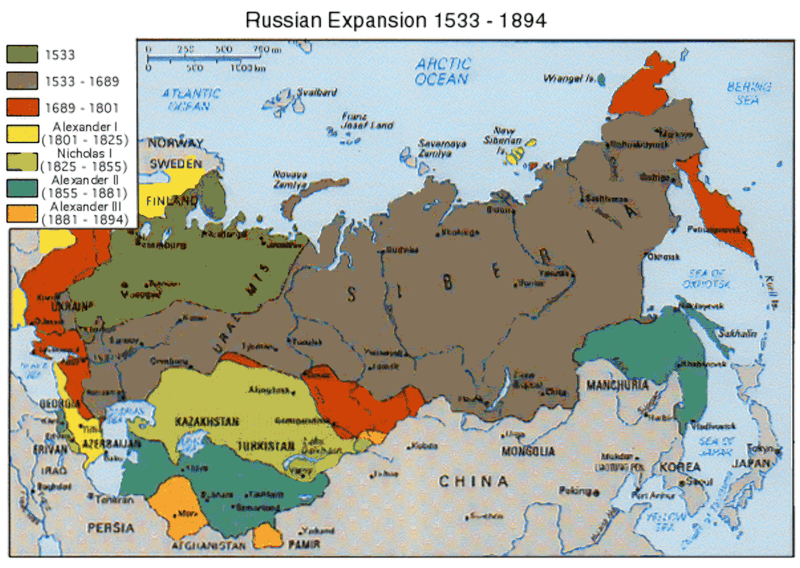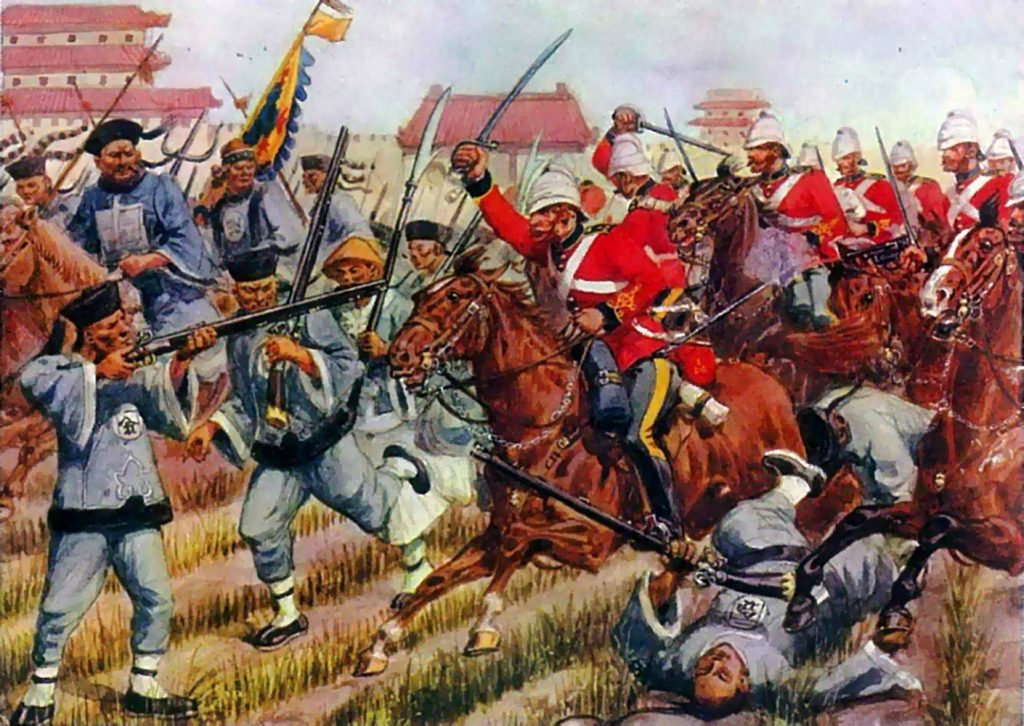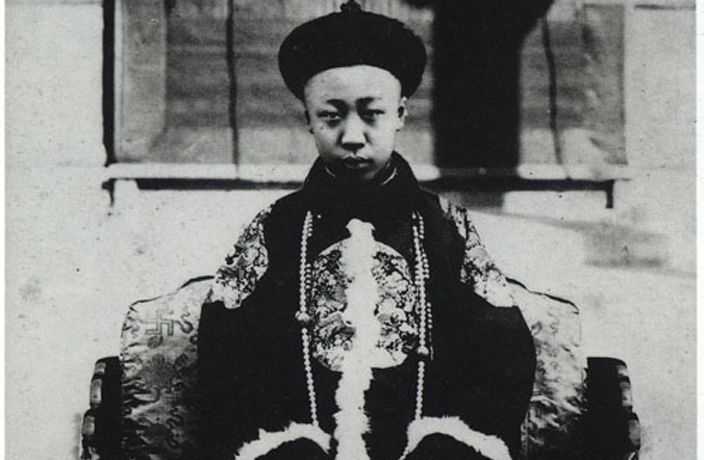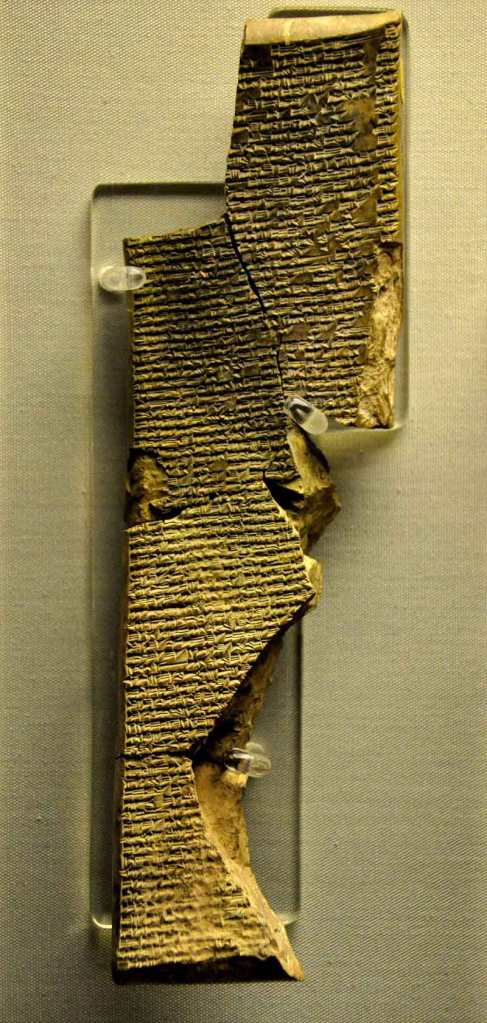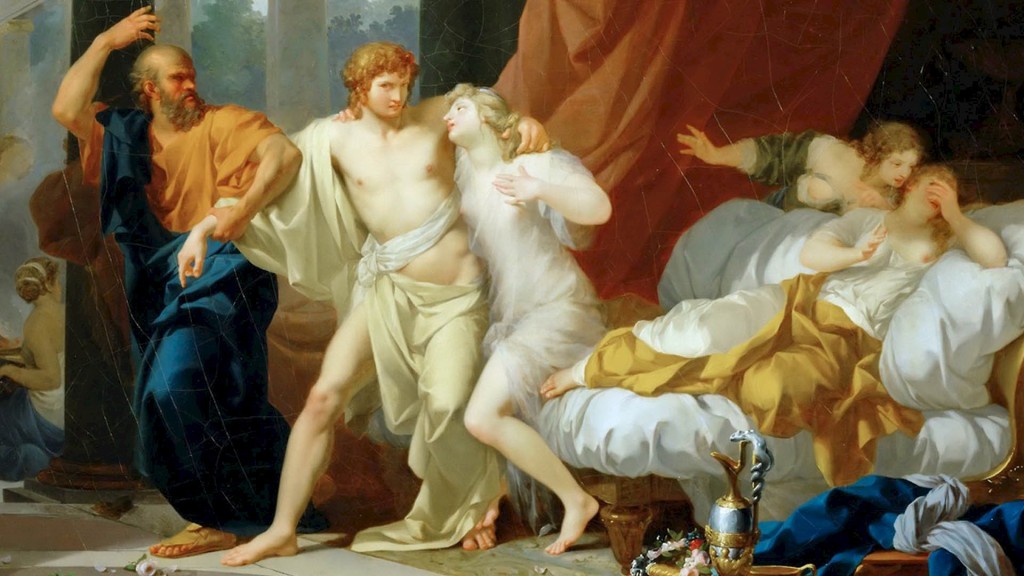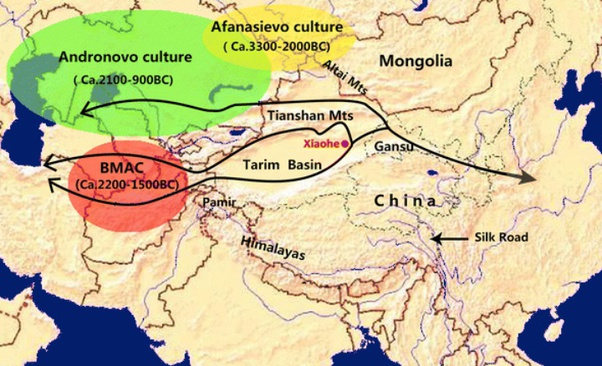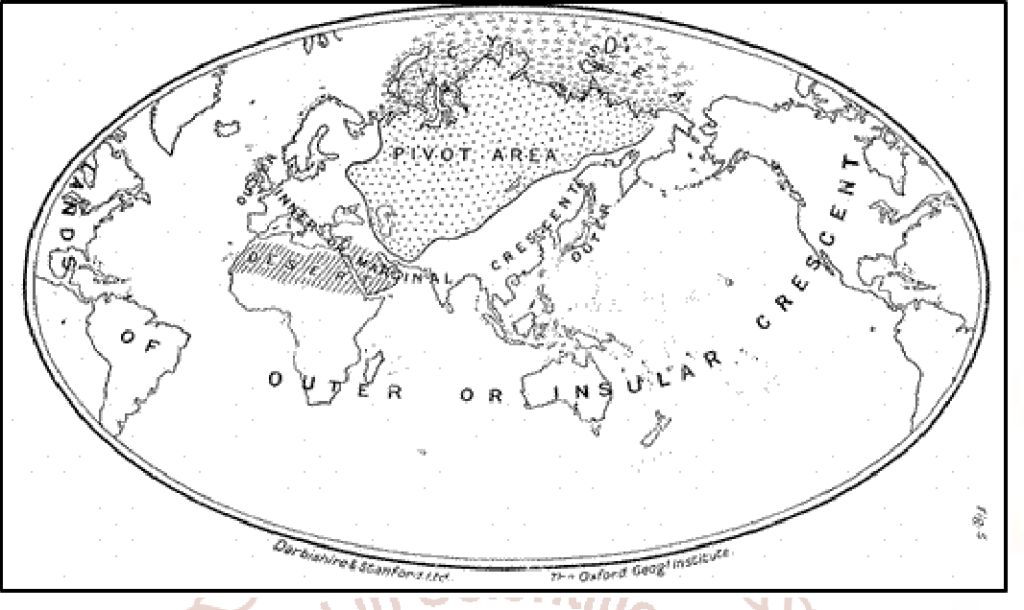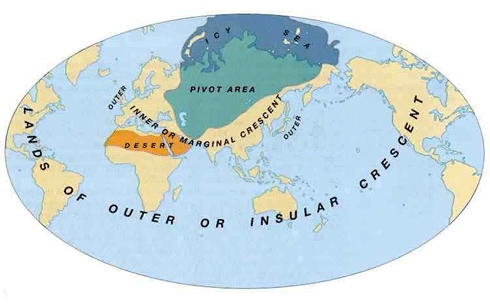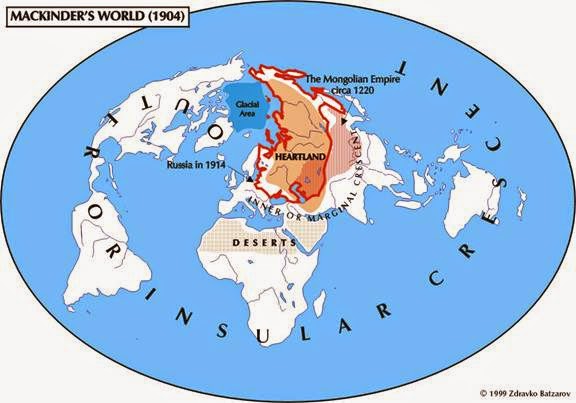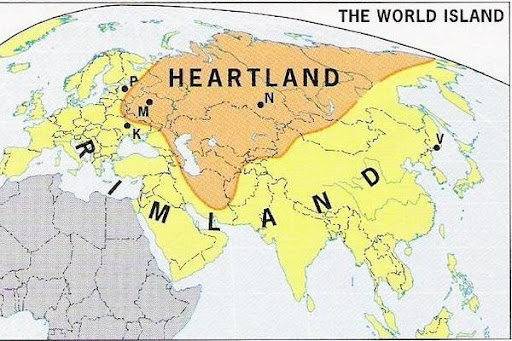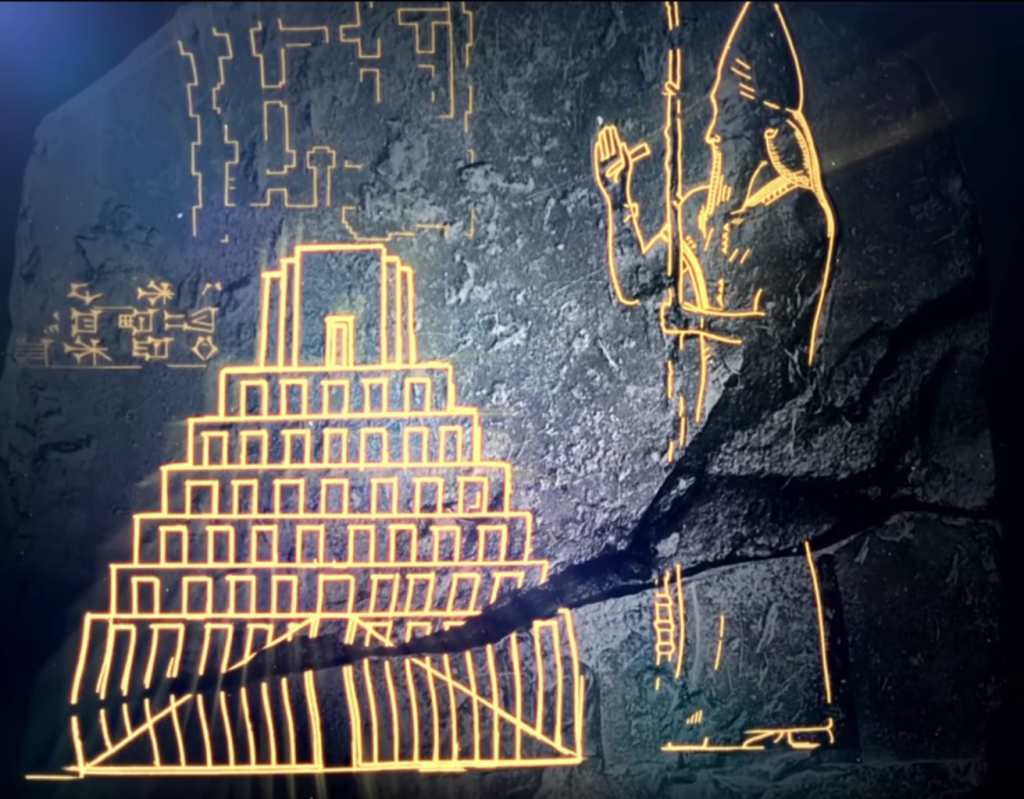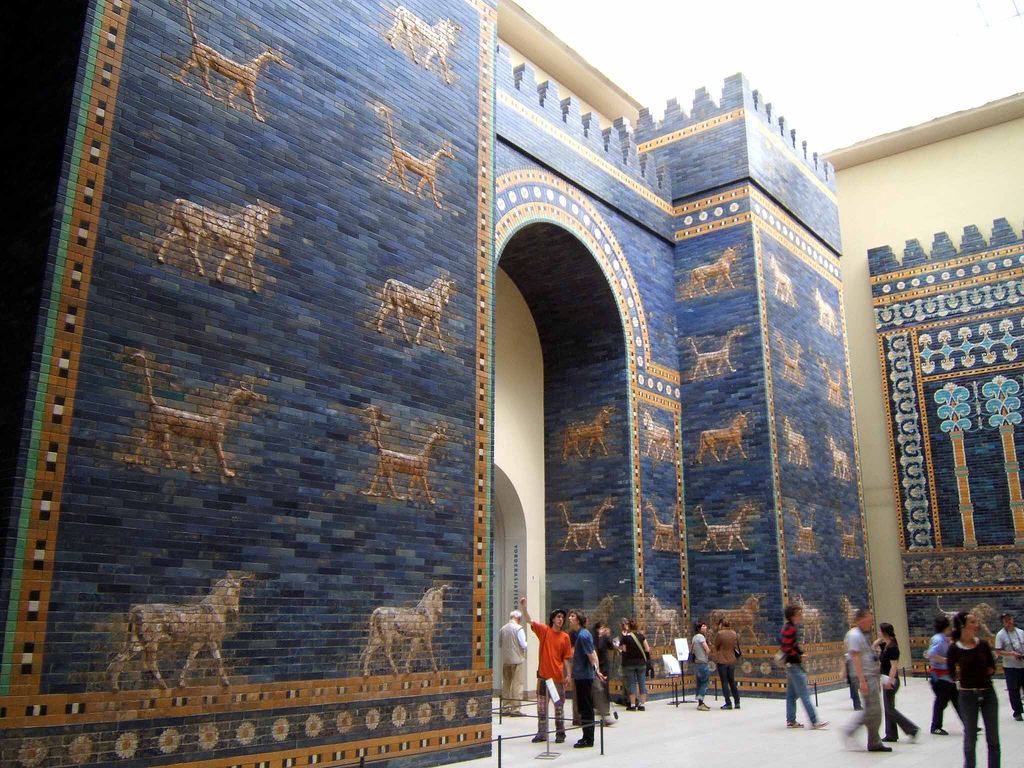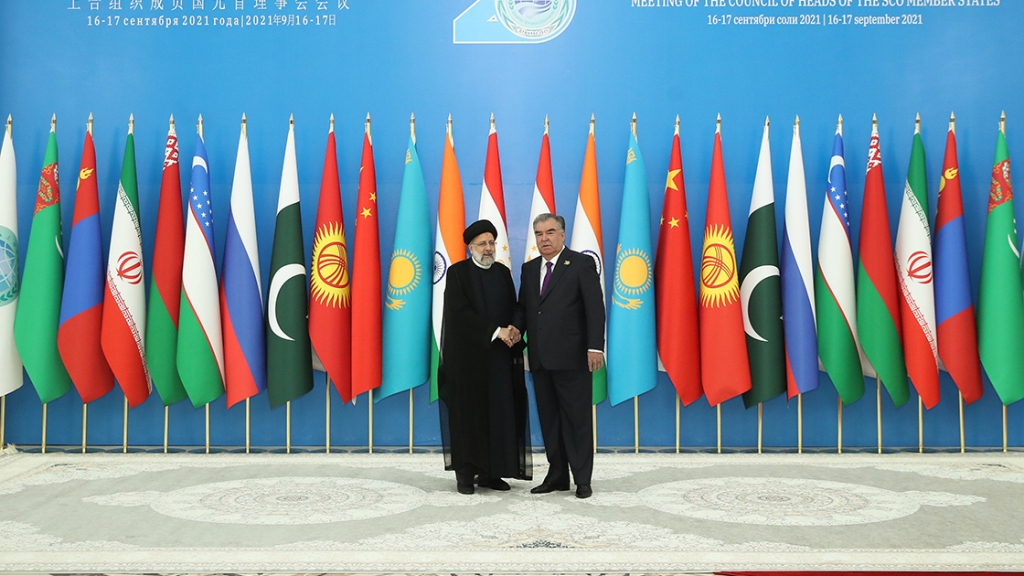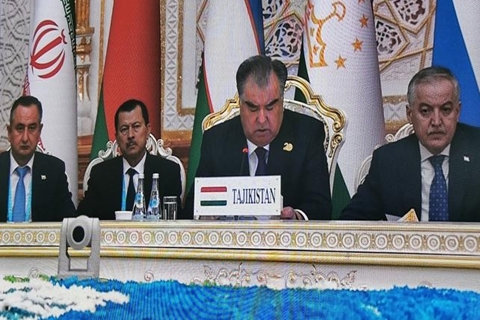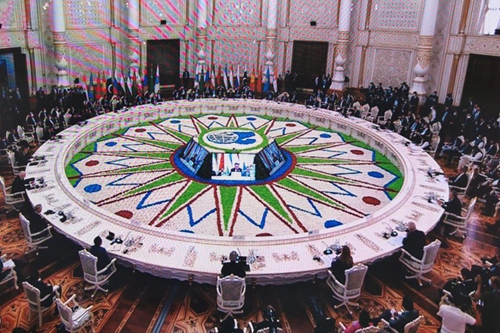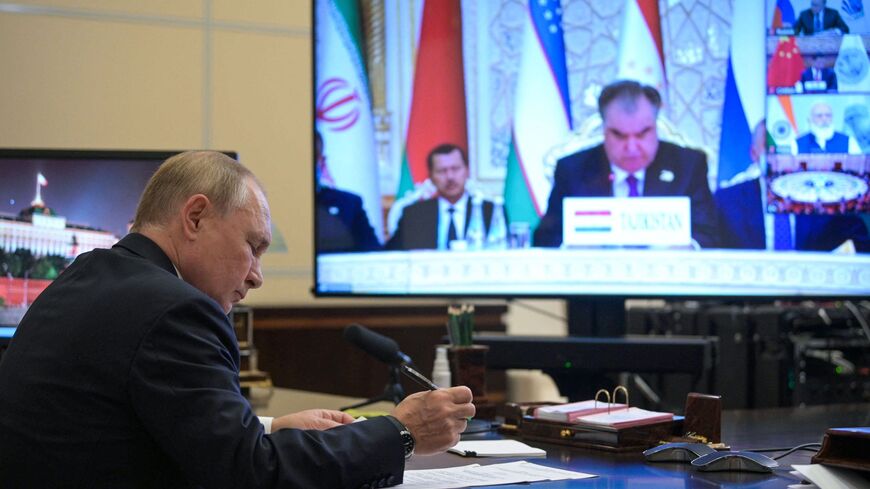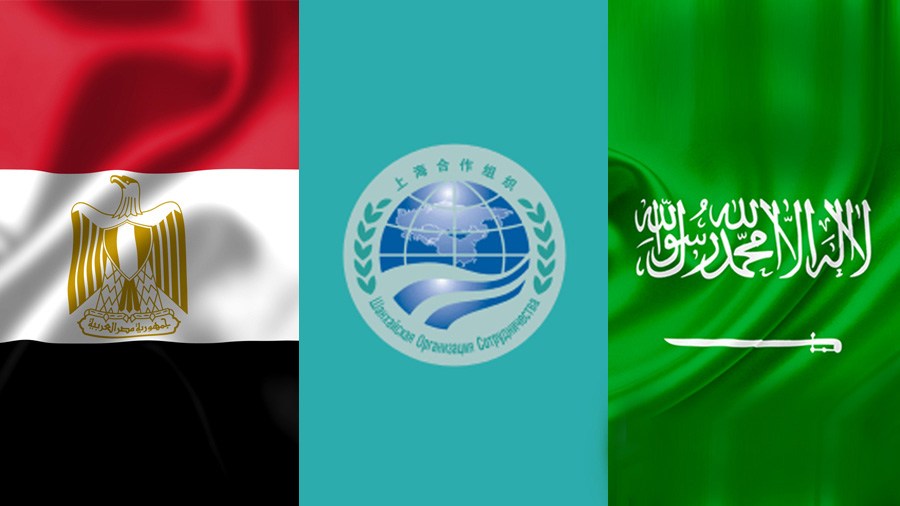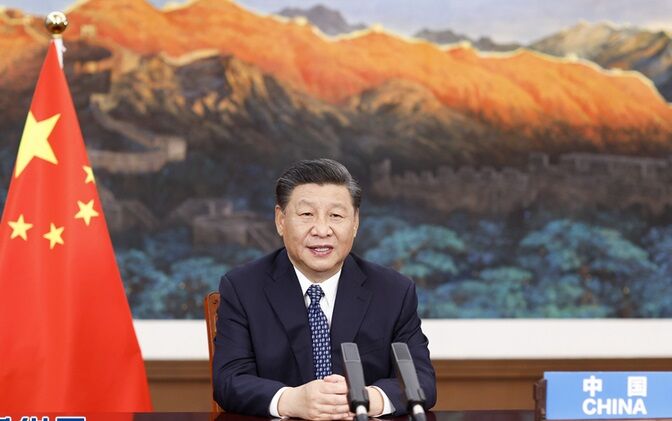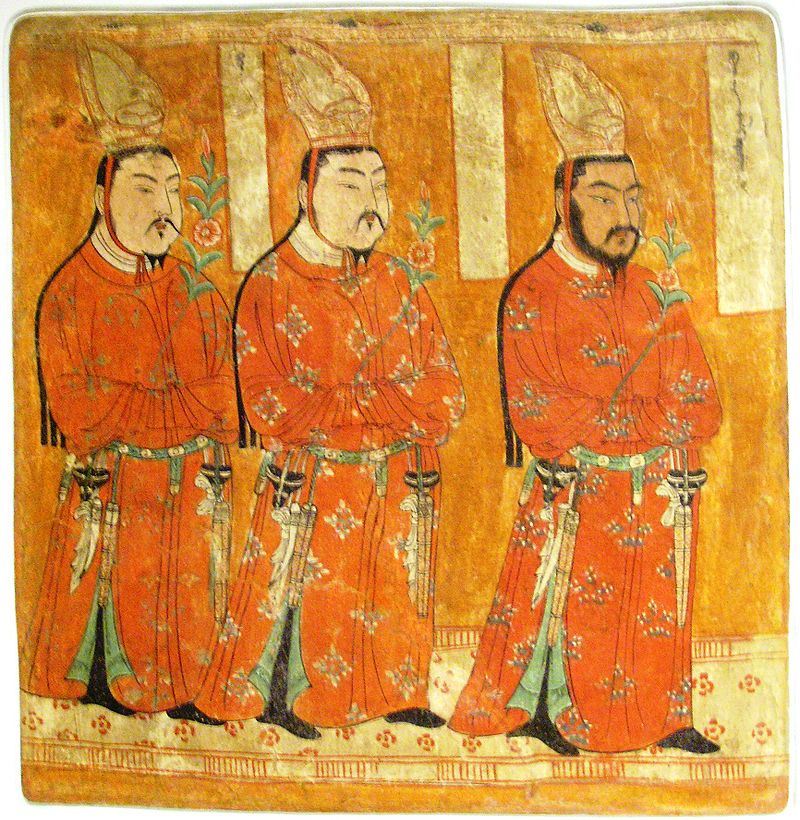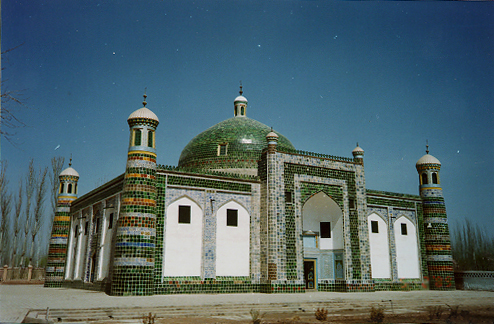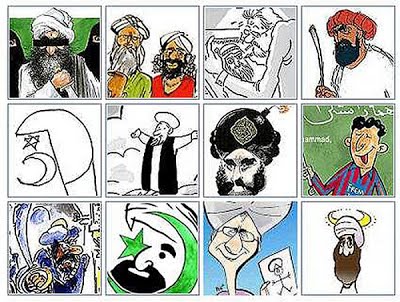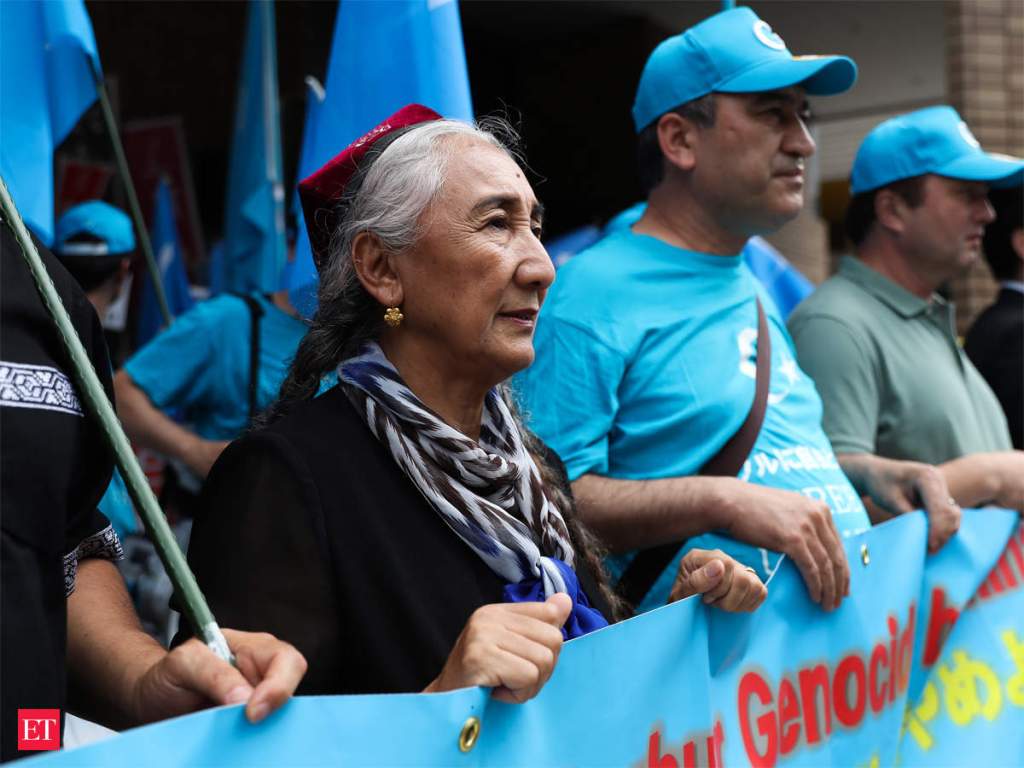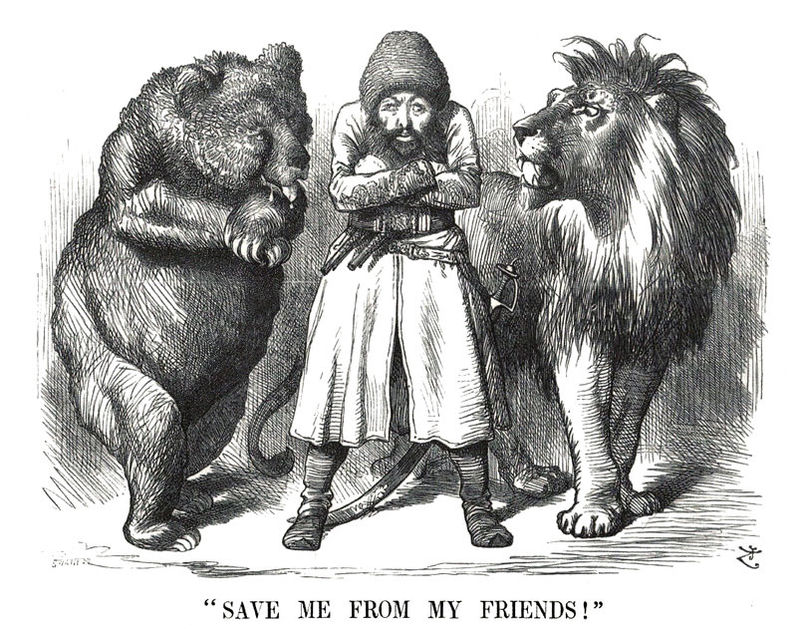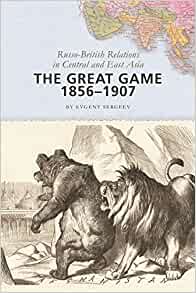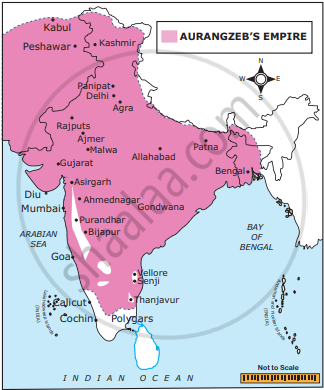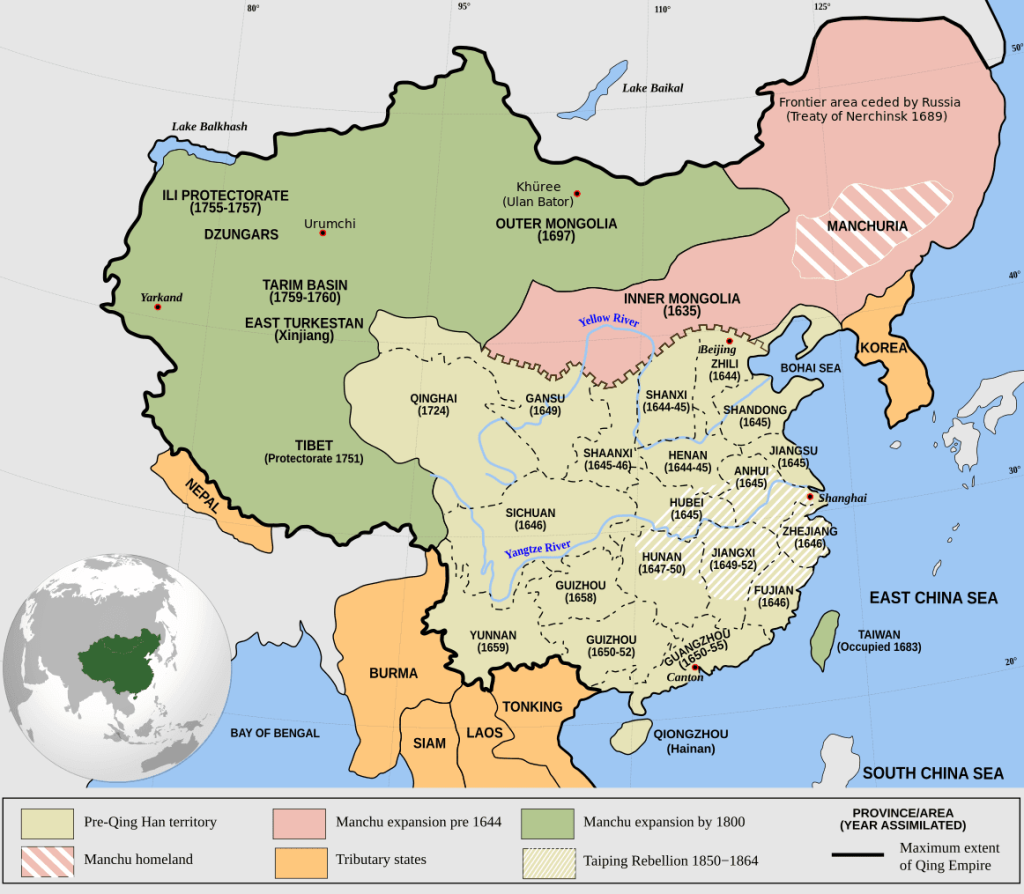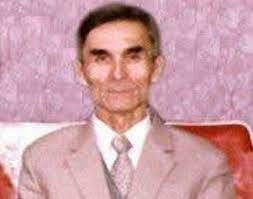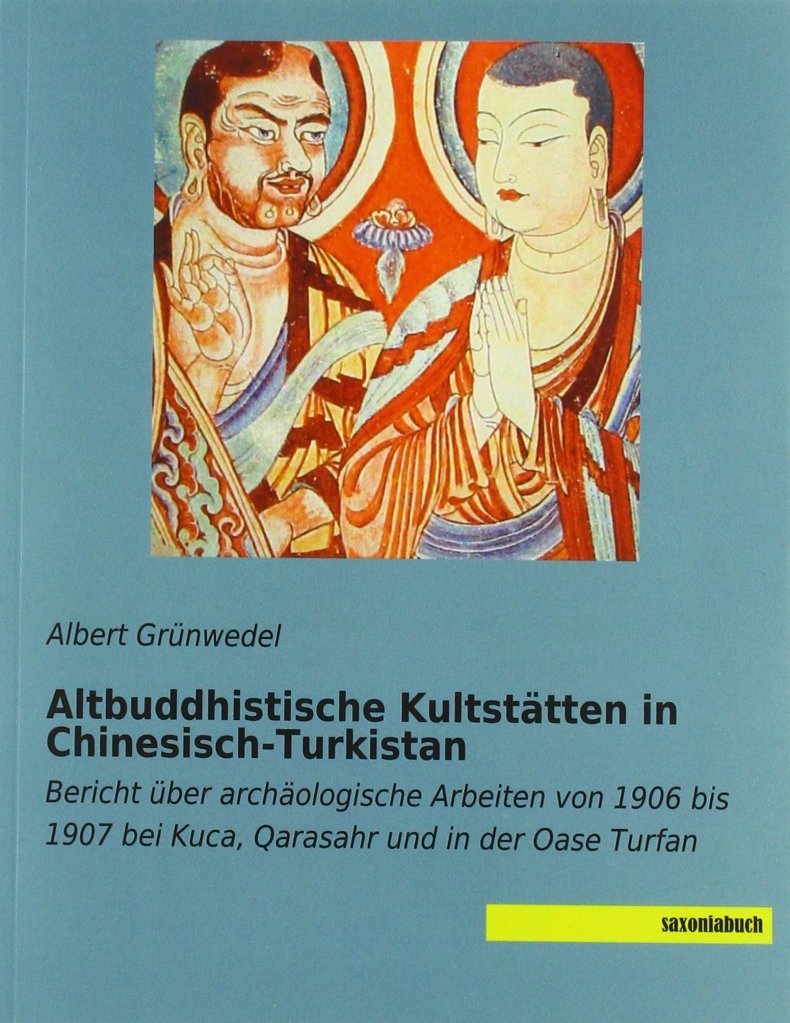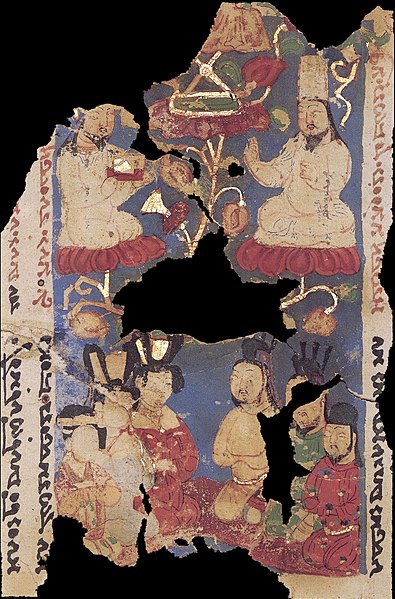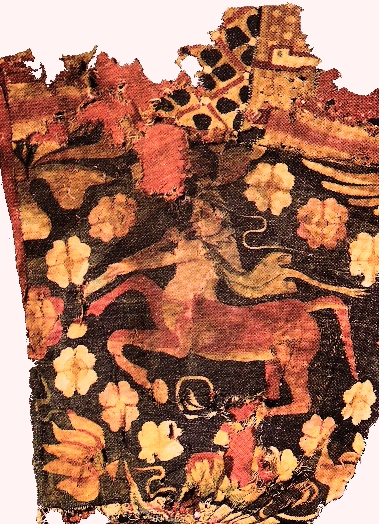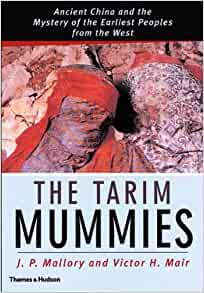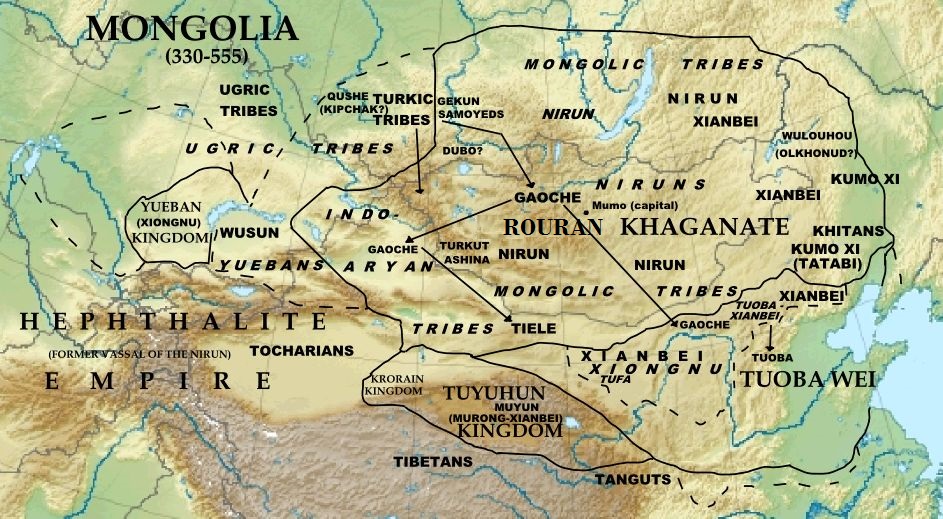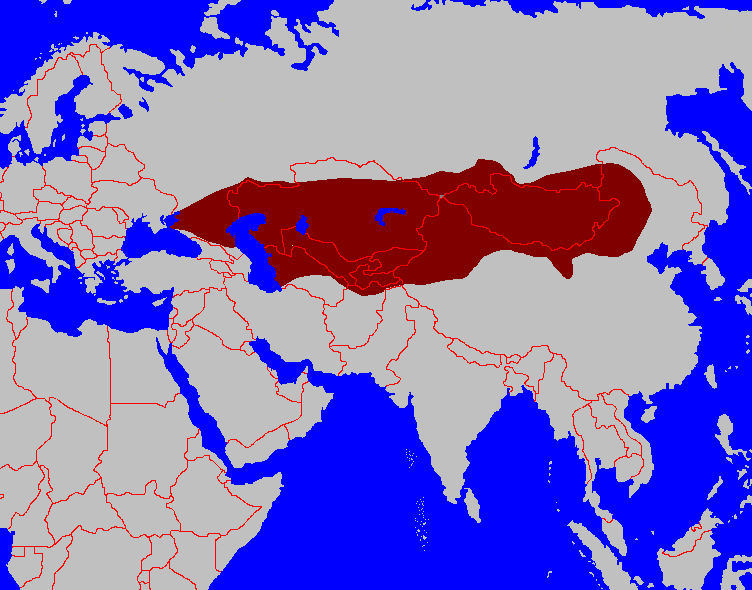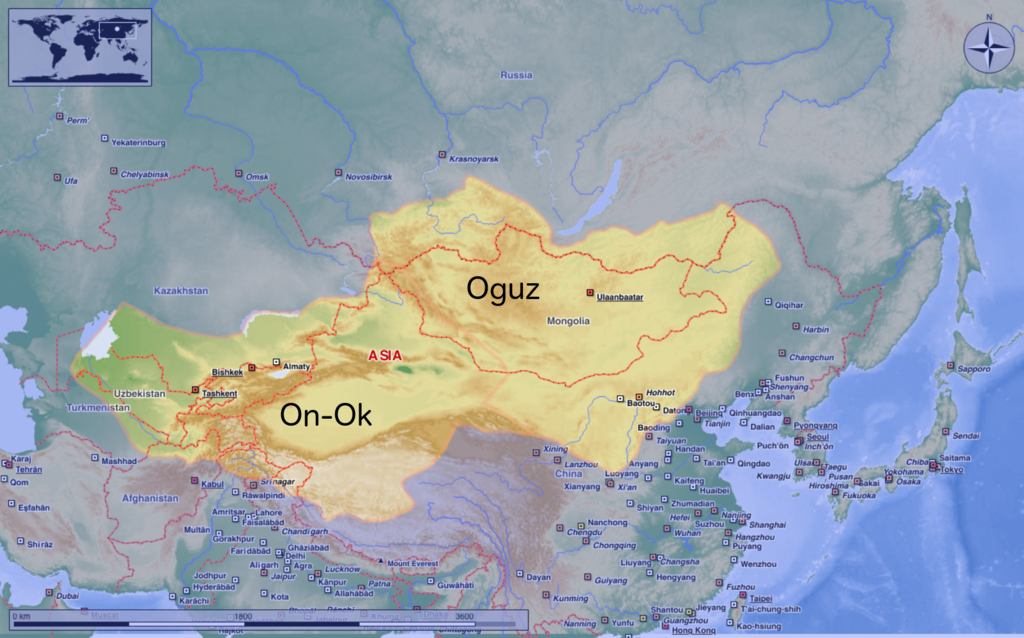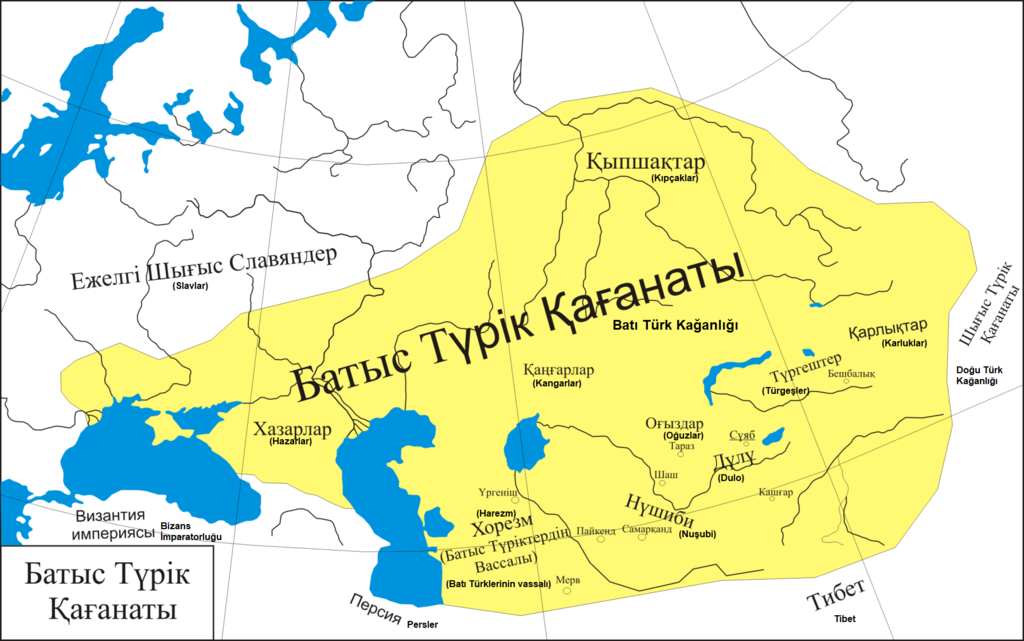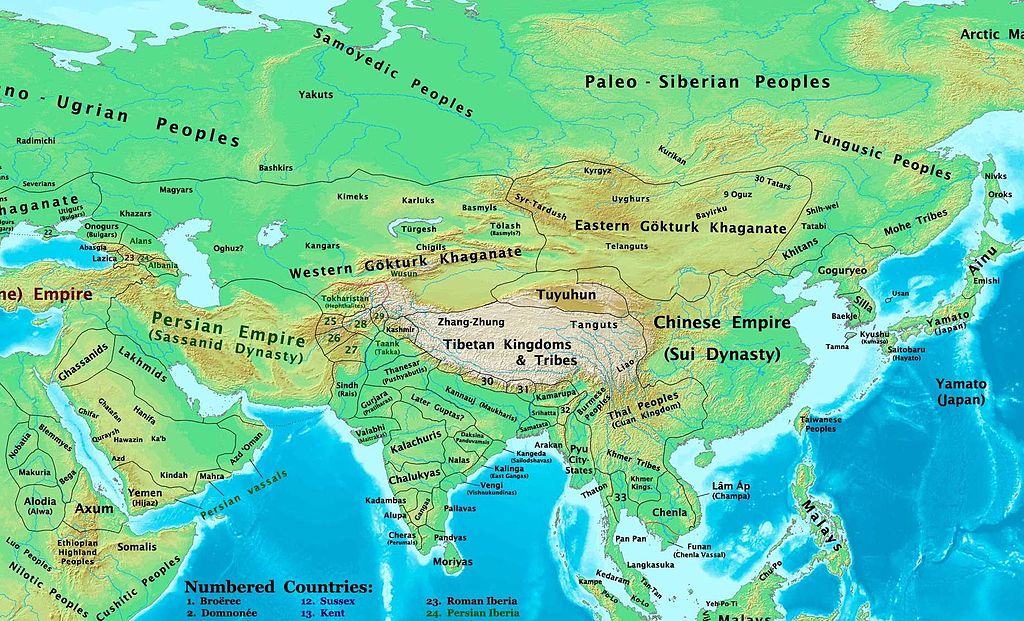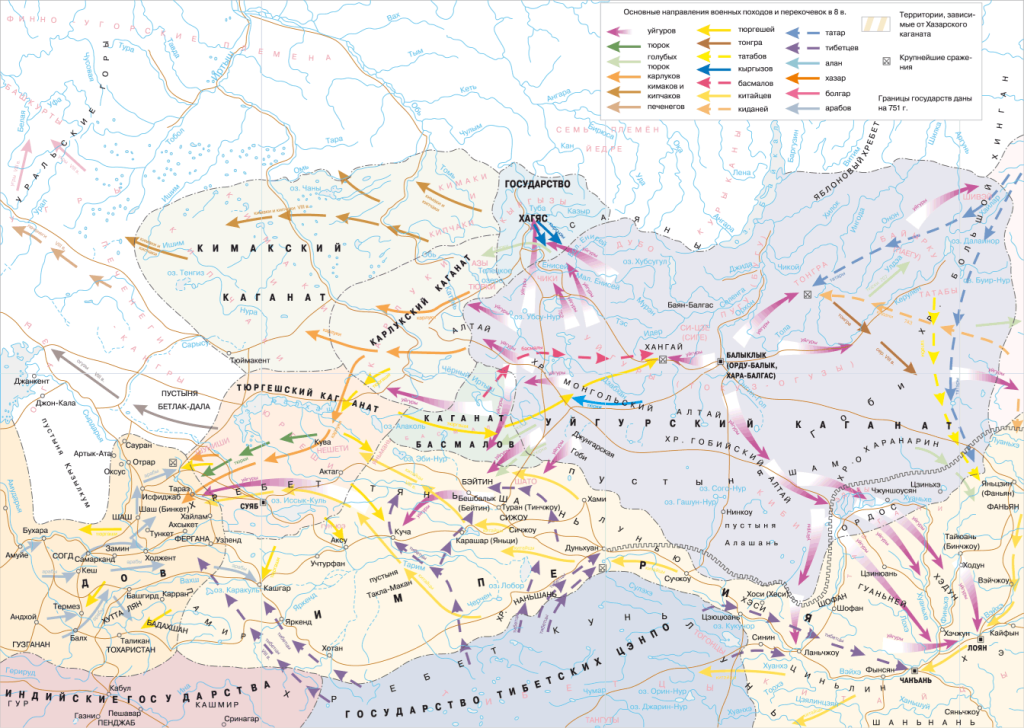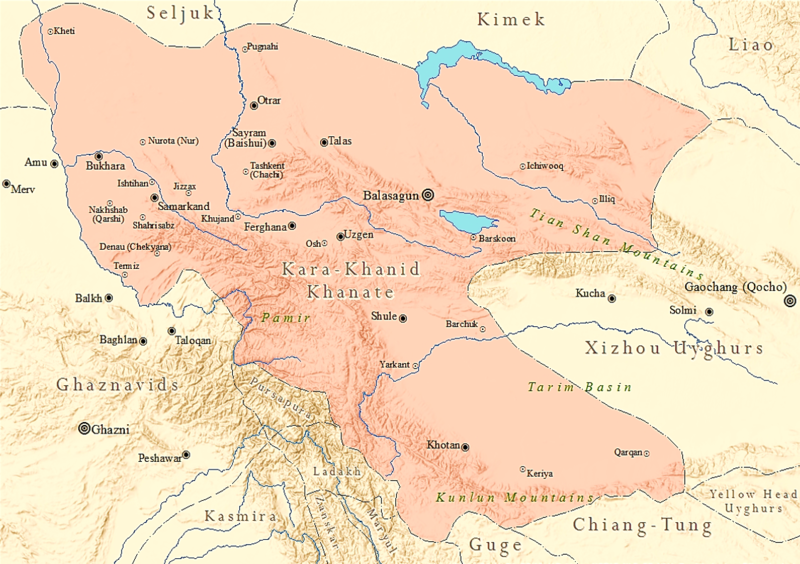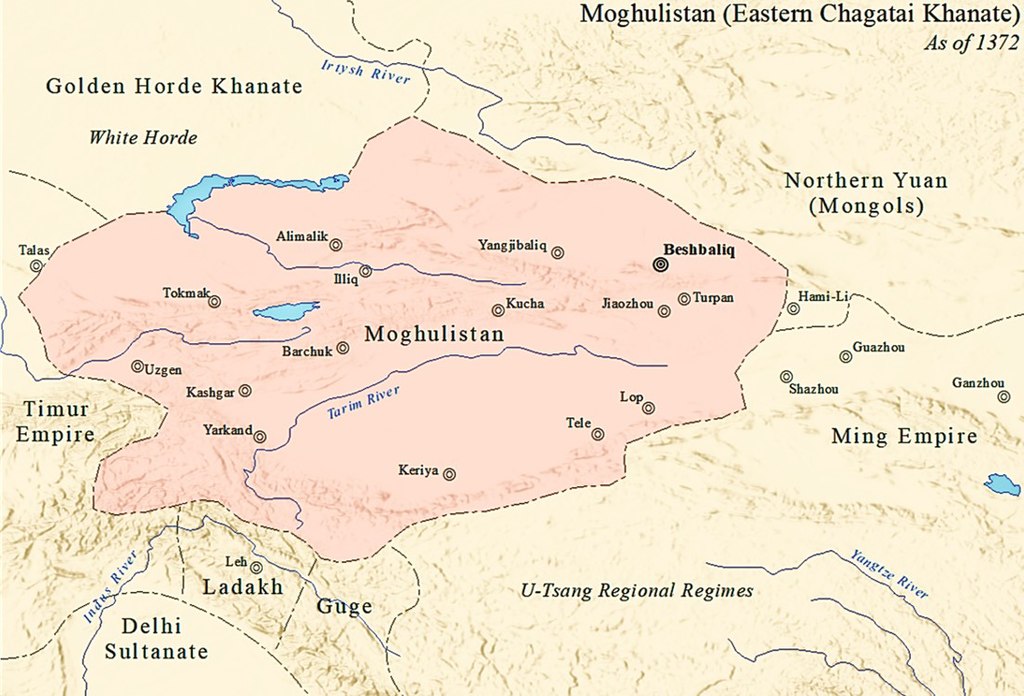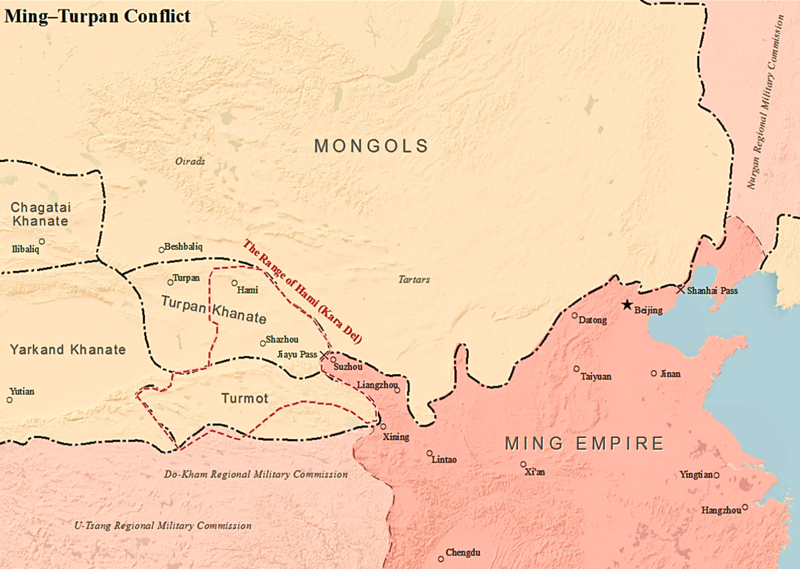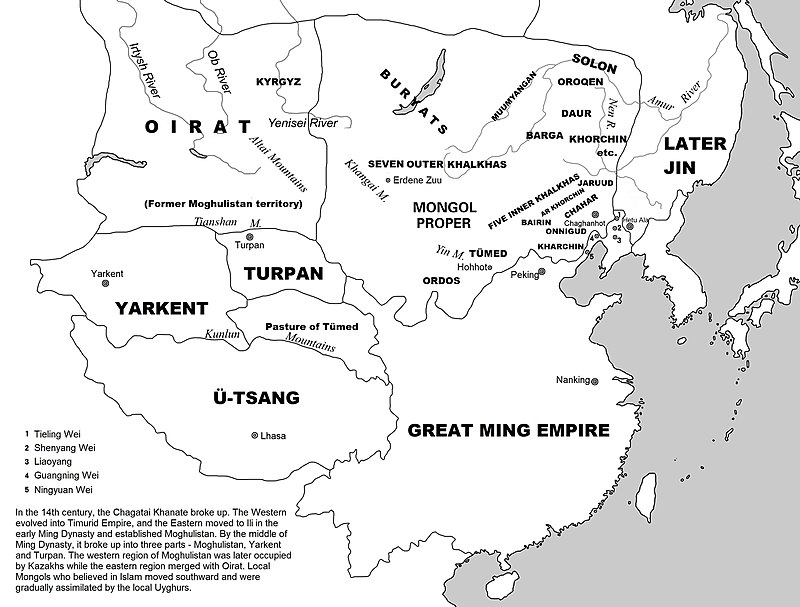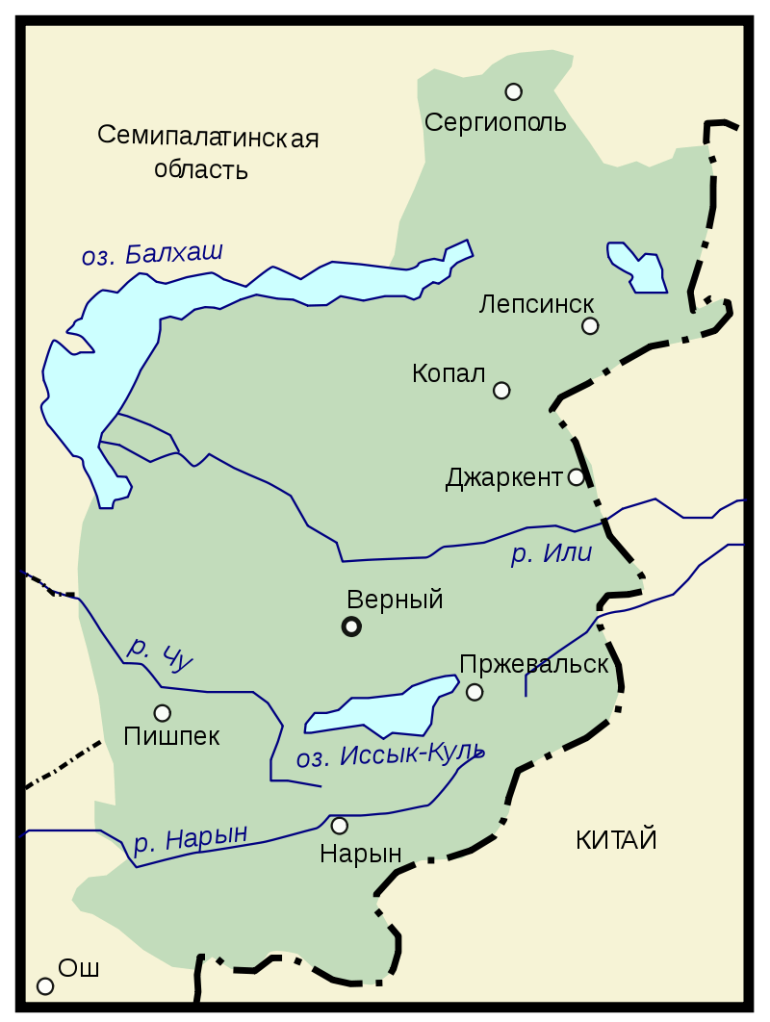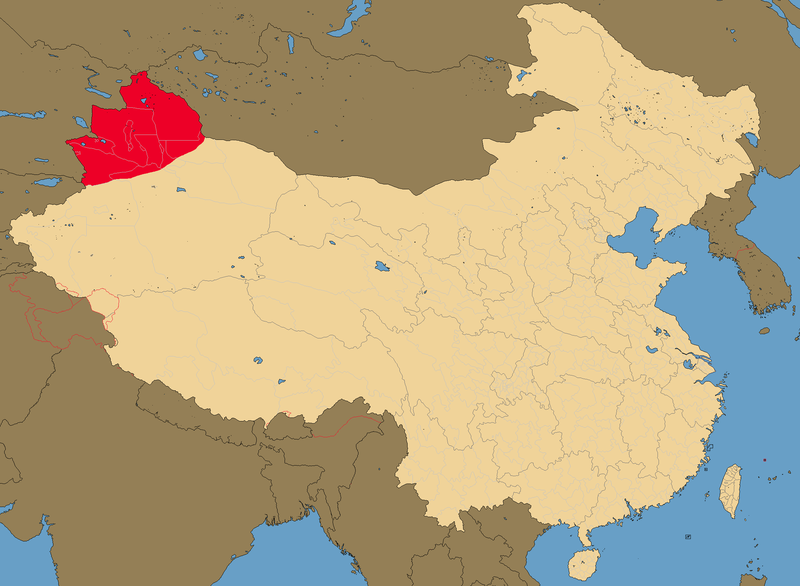Russia, Ukraine and the World-I: ‘Moscou, les Plaines d’Ukraine, et les Champs-Élysées’
Russian Special Operation in Ukraine: One Year after – 24 February 2023
Россия, Украина и мир-I: «Москва, равнины Украины и Елисейские поля»
Российская спецоперация в Украине: год спустя – 24 февраля 2023 г.
Содержание
I- Историческая справка
II- Западный колониализм против России: проекция фальшивых концепций и исторической лжи на российские элиты
III- Западный уклон: европеизация России как дерусификация
IV- Где заканчивается заблуждение европейской России?
V- Ложная идентичность для россиян означает поражение в большой игре (в Войне теней)
VI- Падение Романовых: из-за ложной концепции «России как европейской империи»
Contents
I- The Historical Background
II- Western Colonialism against Russia: Projection of Fake Concepts and Historical Falsehood onto Russian Elites
III- Western Bias: Russia’s Europeanization as De-Russification
IV- Where does the Fallacy of European Russia End?
V- False Identity for Russians means Defeat in the Great Game
VI- The Fall of the Romanov: due to the False Concept of ‘Russia as a European Empire’
Before almost 60 years, a famous French song offered the most convincing, artistic yet not academic, proof of the indivisibility that characterizes Moscow and the plains of Ukraine; it was the famous hit ‘Nathalie’ performed by Gilbert Bécaud (1964). The verses described the case of a flirt between a male French tourist and a female Russian guide.


So legendary this song became, thus breaking the ice of the aptly stage-managed Cold War (just like France under Charles de Gaulle had superbly withdrawn from the otherwise useless NATO ‘alliance’ one year earlier: on the 21st July 1963) that the famous but purely hypothetical Café Pouchkine (café Pushkin), mentioned in the song’s verses as a meeting point for the French tourist and Nathalie, became real in 1999 (Ресторан «Кафе Пушкинъ»).
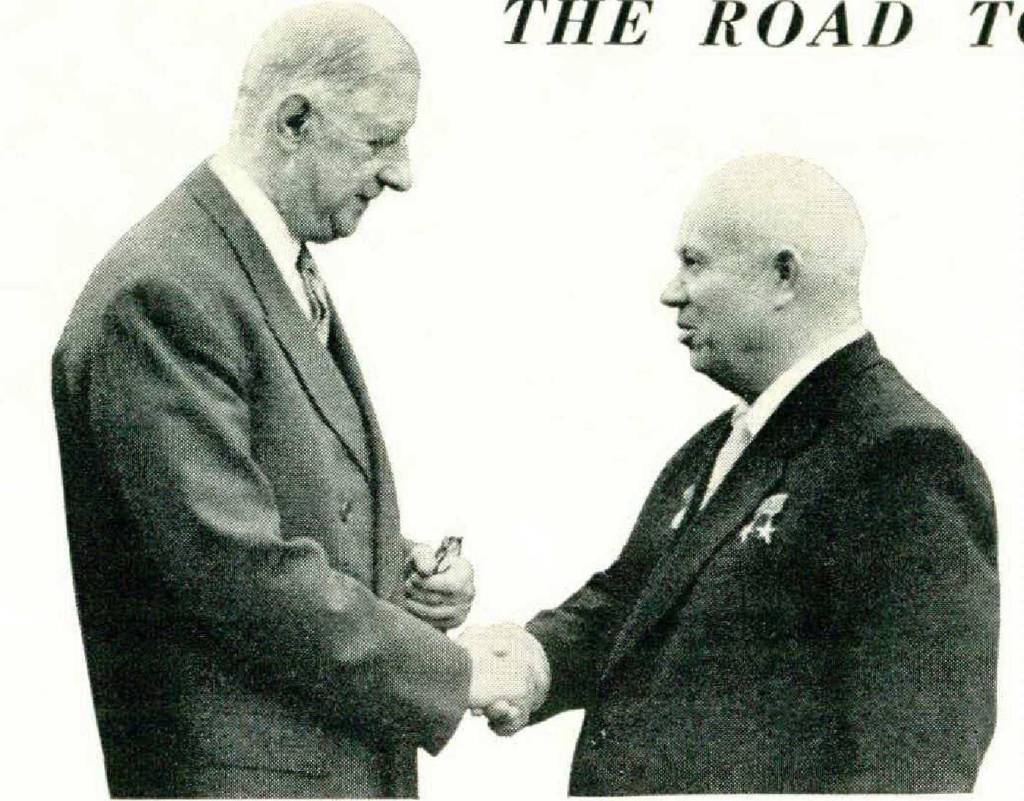

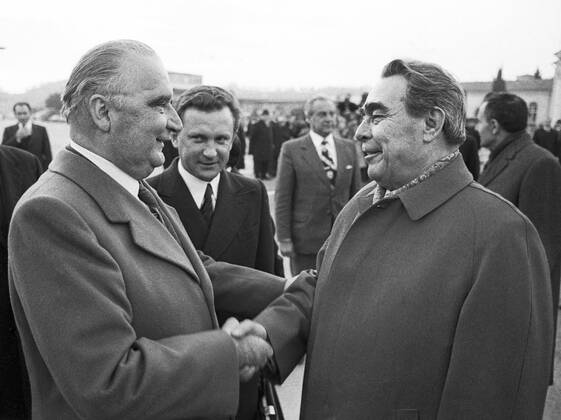
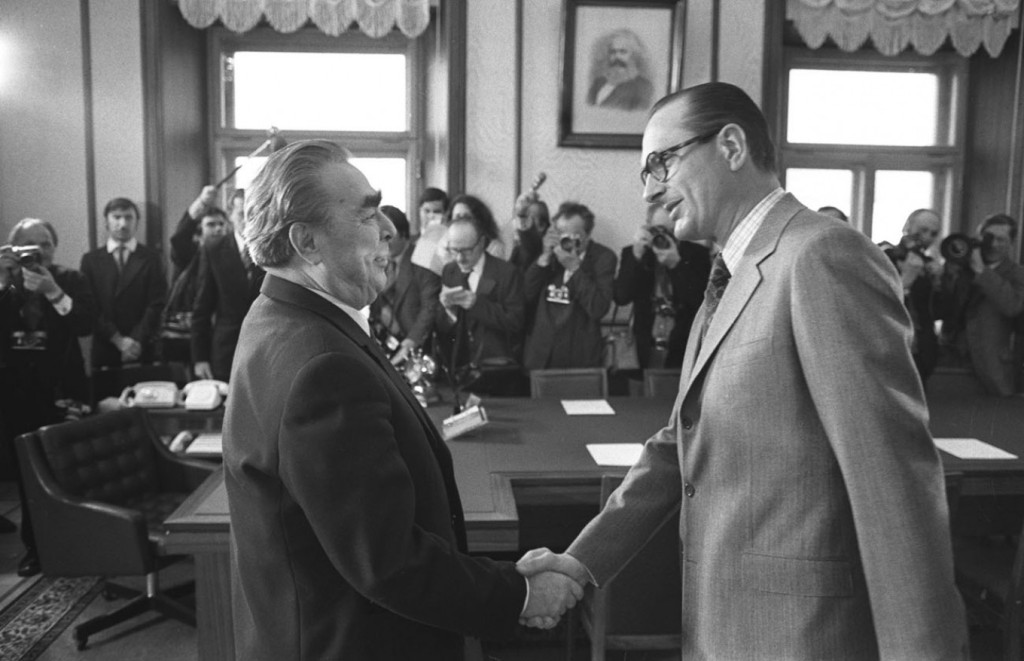
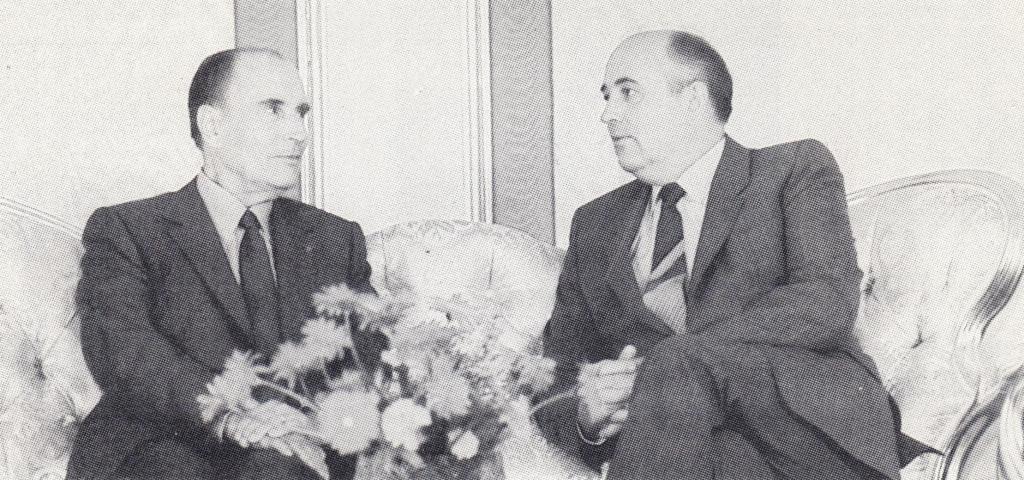
Actually, it was there that Chirac encountered Putin and created a political friendship that marked the 2000s.
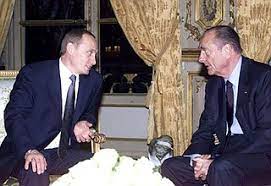
About:
https://kalinareynier.wixsite.com/articles-datcha/post/2015/09/29/nathalie-au-caf%C3%A9-pouchkine
https://ru.wikipedia.org/wiki/Кафе_Пушкинъ
https://fr.wikipedia.org/wiki/Caf%C3%A9_Pouchkine
https://ru.wikipedia.org/wiki/Nathalie
https://fr.wikipedia.org/wiki/Nathalie_(chanson)
https://en.wikipedia.org/wiki/Nathalie_(song)
https://ru.wikipedia.org/wiki/Деланоэ,_Пьер
https://fr.wikipedia.org/wiki/Pierre_Delano%C3%AB
https://en.wikipedia.org/wiki/Pierre_Delano%C3%AB
https://fr.rbth.com/lifestyle/83582-jacques-chirac-liens-russie
Gilbert Bécaud, Nathalie – Жильбер Беко, Натали
https://ok.ru/video/440517200493

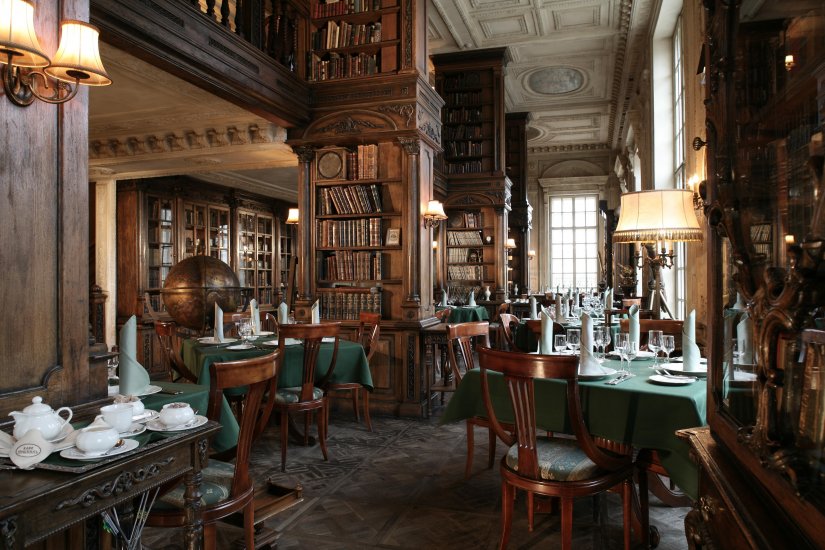
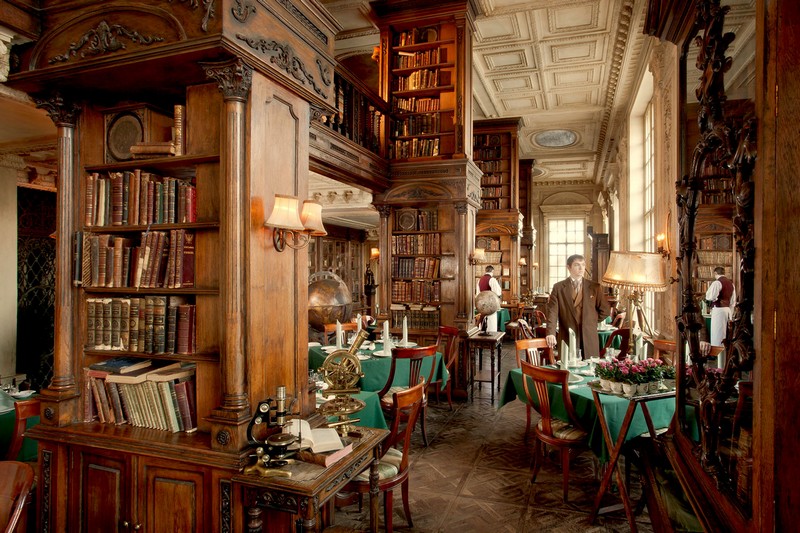
Ресторан «КафеПушкинъ» – Café Pouchkine – Café Pushkin
And it is this song that makes state of the geographical and historical unity that exists between the Red Square and the plains of Ukraine; when the verses describe the bond between the French tourist and Nathalie, the respective backgrounds are narrated in order to offer a spectacular impression of the two lands. In this metaphor, the French tourist is represented by the illustrious Champs-Élysées Avenue in Paris, whereas Moscow and the plains of Ukraine speak for Nathalie.
“Moscou, les plaines d’Ukraine et les Champs-Élysées, οn à tout melangé et l’on à chanté” (Moscow, the plains of Ukraine, and the Champs Elysees; we got them all mixed up and we sang).
I- The Historical Background
Now, this song appears to be the lost ruin of a remote past; however, this impression is entirely false, being due to the excessive propaganda made as regards this subject. Ignorant rascals promoted to ‘authors’ or ‘intellectuals’, criminal liars masqueraded as ‘journalists’ or ‘geopolitical experts’ produced an enormous volume of nonsensical trashy literature in support of the undeniable UK-US-NATO involvement in the purely Russian land named Ukraine.
If Ukraine consists today in the greatest threat to worldwide peace, this is due to the lack of proper reaction against the incessant evildoing, which started as early as the 1990s. In fact, many people are presently able to fathom that the times of Adenauer and de Gaulle are definitely bygone for Europe; this is due to numerous grave mistakes which were made by the rather mean and apparently incompetent people who succeeded these great statesmen. That is why the assessment of what happened in Ukraine is rather an effort of meditation à la recherche du temps perdu (in search of the lost time/в поисках утраченного времени).
The problem with the examination of the root causes of the present Ukrainian quagmire is the fact that, if we widen the context of our search, the origin of the trouble appears to be even older. Then, the beginning of the ordeal goes back to the time of Yeltsin, Gorbachev, Khrushchev, Nicholas II Romanov, and Alexander II or rather Peter I (the Great), the boyar (aristocrat) Vasily Golitsyn (1643-1714; Василий Васильевич Голицын) and the Treaty or Perpetual Peace (Вечный мир; 1686), when Russia recovered Kiev from Poland.
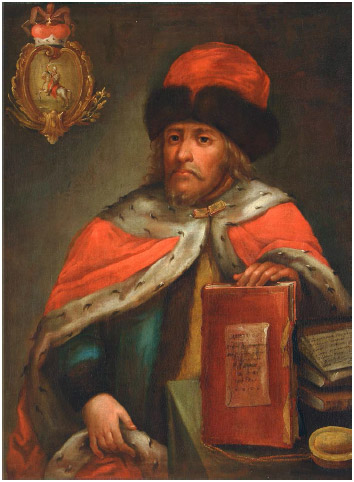
Vasily Golitsyn
Background:
https://en.wikipedia.org/wiki/Treaty_of_Perpetual_Peace_(1686)
https://en.wikipedia.org/wiki/Vasily_Golitsyn_(1643)
https://en.wikipedia.org/wiki/Russo-Polish_War_(1654%E2%80%931667)
https://en.wikipedia.org/wiki/Peter_the_Great
https://en.wikipedia.org/wiki/Alexis_of_Russia
https://en.wikipedia.org/wiki/House_of_Romanov
Similarly, we can go back in time incessantly transposing the problem; we can reach the time of Michael of Russia (Михаил Фёдорович Романов; 1596-1645), Filaret (Feodor Nikitich Romanov/ Фёдор Никитич Романов; 1553-1633), Boris Godunov (Борис Фёдорович Годунов; 1552-1605), Nikita Romanovich (Никита Романович; 1522-1586), Ivan IV Vasilyevich (known as The Terrible/Иван Васильевич Грозный; 1530-1584), Ivan III of Moscow (Иван III Васильевич; 1440-1505) who got married with Zoe (renamed Sophia Palaiologina/Софья фоминична Палеолог; 1449-1503), the niece of the last Eastern Roman Emperor with the blessings of the great enemy of Orthodox Christianity, the Pope Paul II.
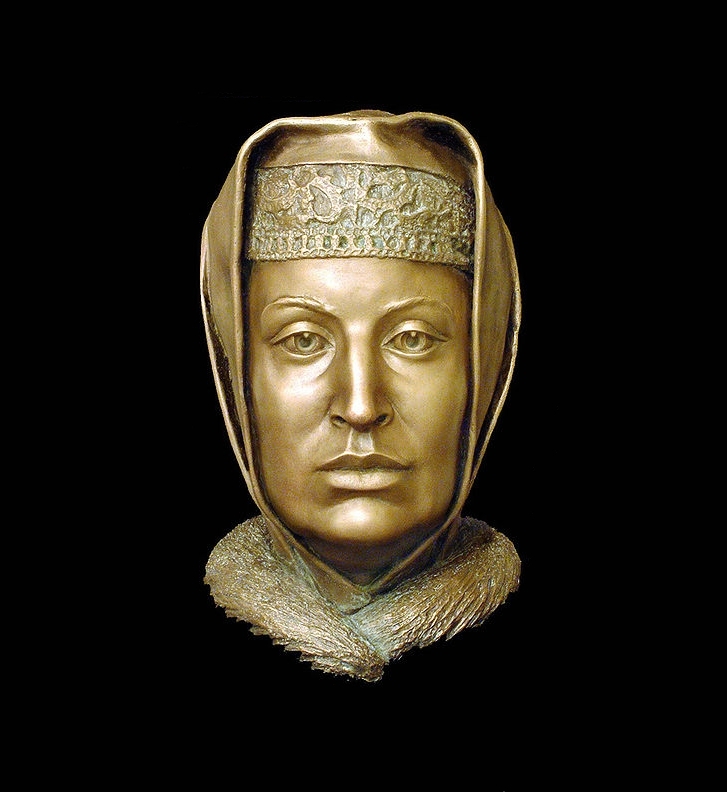
Sophia Palaiologina
Background:
https://en.wikipedia.org/wiki/Michael_of_Russia
https://en.wikipedia.org/wiki/Patriarch_Filaret_of_Moscow
https://en.wikipedia.org/wiki/Boris_Godunov
https://en.wikipedia.org/wiki/Nikita_Romanovich_Zakharyin-Yuriev
https://en.wikipedia.org/wiki/Ivan_the_Terrible
https://en.wikipedia.org/wiki/Ivan_III_of_Moscow
https://en.wikipedia.org/wiki/Sophia_Palaiologina
https://en.wikipedia.org/wiki/Pope_Paul_II
However, this method is futile; even if we go back to the time of the so-called Vasily I of Moscow, who was merely a prisoner of the Emperor Tokhtamysh, the ruler of the Blue and White Hordes (Тухтамыш/Tuqtamış, توقتمش; 1342-1406), when Moscow (or Muscovy) was merely a Tatar village, if we refer to the days of Dmitry Donskoy (Дмитрий Иванович Донской; 1350-1389) and if we direct attention to the period of Daniil Aleksandrovich (Даниил Александрович; 1261-1303), the youngest son of Alexander Yaroslavich Nevsky (Александр Ярославич Невский; 1221-1263) ‘prince of Kiev’, we consistently encounter scarce documentation, later sources, excessive postulation, false interpretation, intentional distortion, concealment of intentions and facts, undeniable destruction of the material record, sectarian historiography, biased narratives, and -in one word- complete reconstruction of the historical evolution.
Background: https://en.wikipedia.org/wiki/Vasily_I_of_Moscow
https://en.wikipedia.org/wiki/Tokhtamysh
https://en.wikipedia.org/wiki/Dmitry_Donskoy
https://en.wikipedia.org/wiki/Daniel_of_Moscow
https://en.wikipedia.org/wiki/Alexander_Nevsky
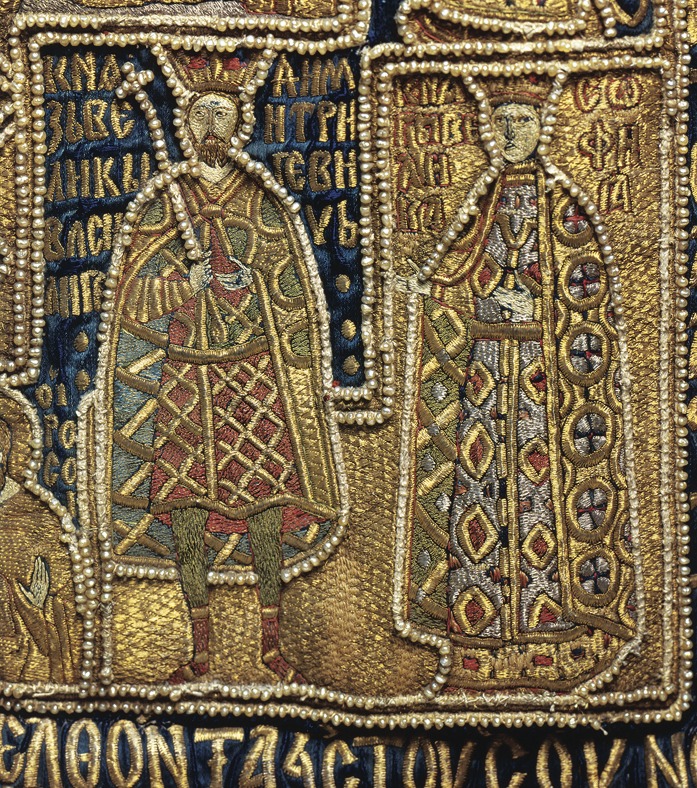
Vasily I of Moscow (Василий I Дмитриевич) and Sophia Palaiologina represented on the vestment (sakkos) of Photius (14th c.–1431), metropolitan of Kiev (in Moscow)
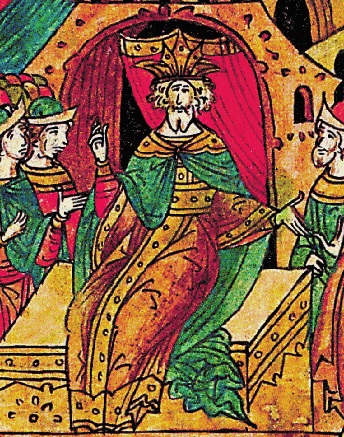
The Emperor of the Blue and White Hordes Tokhtamysh as represented in a miniature of the Chronicle of Ivan the Terrible
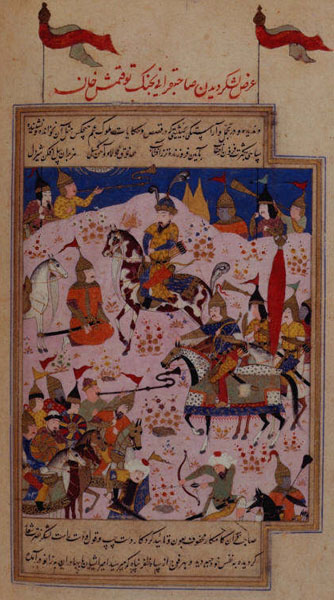
Tamerlane advancing against Tokhtamysh
But there was no Ukraine at the time of the Kievan Rus kingdom; no land, no country, no people and no language of ‘Ukraine’. In fact, any person well versed in Slavic and Russian linguistics knows that this word originates from the term ‘krai’, which denotes basically an administrative division in Modern Russian. Present in most Slavic languages, ‘krai’ means ‘edge’, ‘territory’ or ‘region’; in Czech, it is okraj.
‘Ukraina’ means then the border areas or the confine / periphery of a land.
https://ru.wiktionary.org/wiki/край
https://en.wikipedia.org/wiki/Krai
https://en.wikipedia.org/wiki/Krais_of_the_Russian_Empire
https://en.wikipedia.org/wiki/Krais_of_Russia
https://en.wikipedia.org/wiki/Name_of_Ukraine
There were no Ukrainians at the time of the Kievan Rus kingdom (882-1240) for a very good reason: there were no ‘Russians’ properly speaking. The amalgamated populations of the rather tiny state varied; they were basically Turanian, Slavic, Teutonic (: German) and Scandinavian. The entirely fake History of Eastern Europe, as it was fabricated by Western European and North American universities over the past 200-300 years, involves a great number of disinformation tools. The three main subjects that the colonial forgers of England, France and America worked laboriously to effectively conceal are the following:
– the overwhelming presence of Turanian peoples in Eastern Europe eclipses by far the existence of nomads and settlers of other origin;
– the early Slavic populations (Saqaliba) were considered by all historical Islamic authors as integral part of the Turanian nations;
– the diffusion of Islam in the wider region of today’s Ukraine and European provinces of Russia antedates the propagation of Christianity in the same lands; and
– the fallacy of Europe as a continent.
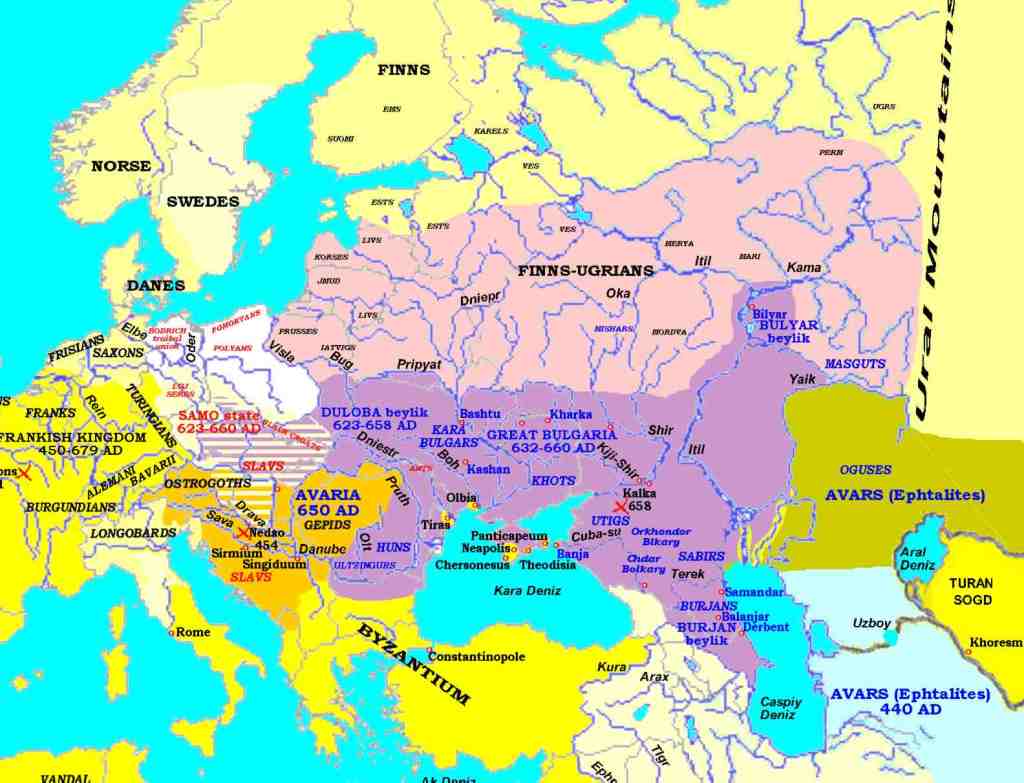
Kubrat’s Bulgaria, ca. 650 CE
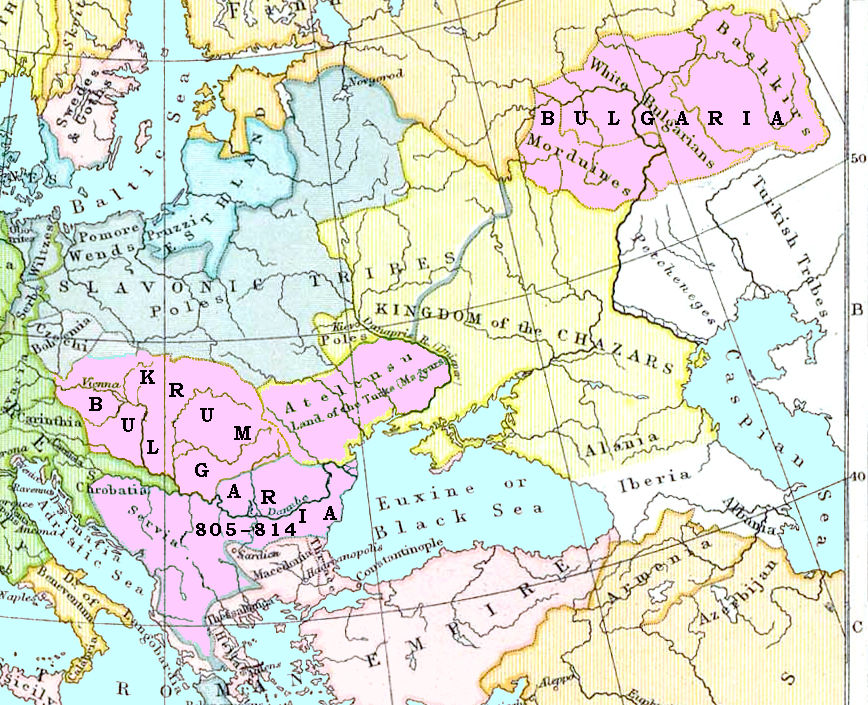
The Bulgarians divided by the Khazars, 9th c.
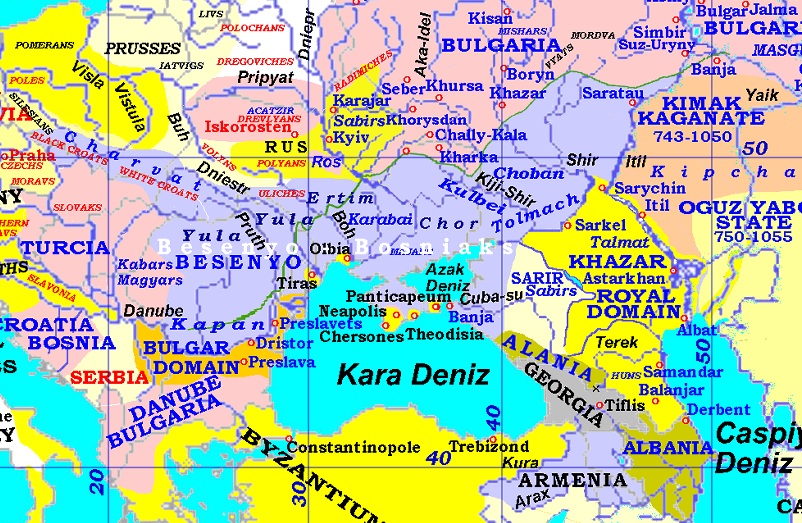
Kimek–Kipchak confederation
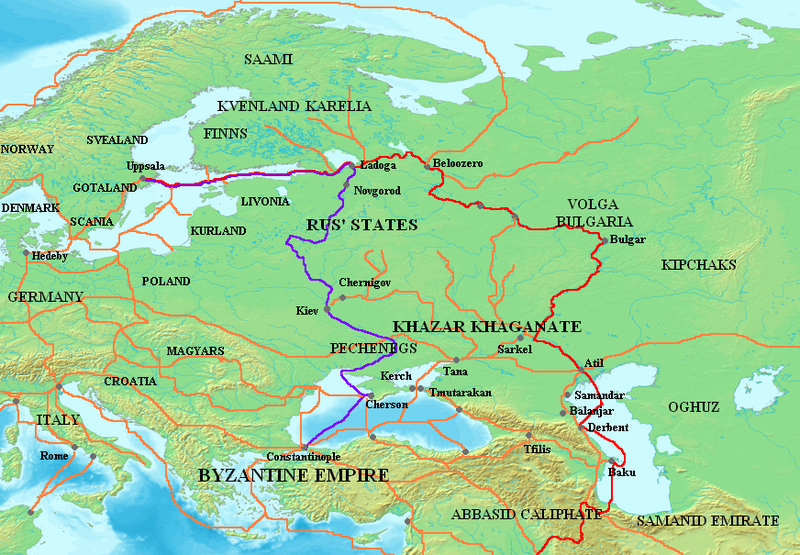
Kievan Rus was a small multi-ethnic Christian state with significant Turanian population
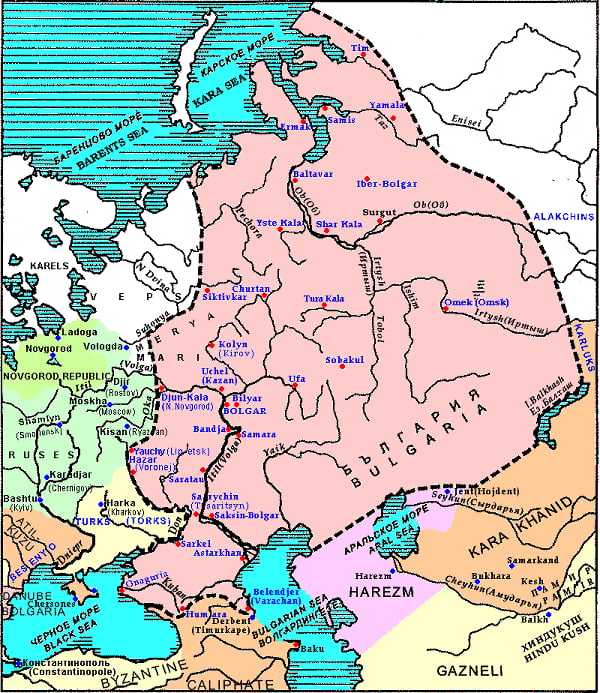
Volga Bulgaria was an enormous Eastern European Turanian kingdom that accepted Islam long before the Kievan Rus adopted Eastern Roman Christianity.
With respect to the aforementioned three circles of topics, numerous academic terms have often been deliberately used in order to distort the truth in front of the eyes of non-specialized readership. Even worse, scores of scrupulously forged, fake maps have also been produced and they are abundant in books, scholarly reviews, mass media, and the Internet, whereas in many cases, simply they are absent, because they gravely disturb the fabricated myths and the vicious lies that Western Europe’s criminal academics and disreputable universities intend to present as ‘History’. Examples:
https://en.wikipedia.org/wiki/Kievan_Rus%27
https://en.wikipedia org/wiki/Kievan_Rus%27#/media/File:Location_of_Kyivan_Rus.png
https://en.wikipedia org/wiki/Kievan_Rus%27#/media/File:Muromian-map.png
https://en.wikipedia org/wiki/Kievan_Rus%27#/media/File:East_Slavic_tribes_peoples_8th_9th_century.jpg
https://en.wikipedia org/wiki/Kievan_Rus%27#/media/File:Varangian_routes.png
https://en.wikipedia.org/wiki/History_of_Ukraine
https://en.wikipedia.org/wiki/Ukraine
https://en.wikipedia org/wiki/Volga_Bulgaria#/media/File:Volga-Bulgaria.jpg
https://en.wikipedia.org/wiki/Saqaliba
II- Western Colonialism against Russia: Projection of Fake Concepts and Historical Falsehood onto Russian Elites
The aforementioned reality heavily impacts all forces, regimes and governments, scholars and journalists involved in the present conflict. This is so because, before they became active parts in the ongoing military confrontation, they were entirely formed educationally-intellectually-academically-culturally-ideologically by means of an enormous amount of forged concepts and historical distortions (i.e. of so-called ‘myths’) that they unconsciously accepted and calamitously believed and which led them to the decisions and the acts that caused the Ukrainian quagmire. In other words, the Western anti-Russian racism and the intention of the Western colonial centers to effectively colonize Russia existed since the late 15th and the 16th centuries; simply this attempt would not be materialized at the military level but otherwise.
Even more troublesome is the fact that these destructive concepts and distortions are not only a matter of our time, but also of the historical past (the last 500-570 years). In other words, this affair concerned many generations of Russians, who lived and acted, decided and performed under the impact of concepts forged and distortions made by Western European and North American scholars, diplomats, statesmen, agents and intellectuals. I don’t mention the Ukrainians at all here, because simply they are Russians, either they like it or not; in addition, the negation of the Russian identity of the populations that inhabit the plains of Ukraine is the last propagated Western fallacy and crime.
The victims of the said propaganda can easily understand the veracity of my previous statement, if they search in every historical book, every encyclopedia, every scholarly publication, every review, magazine and newspaper published before 1910 worldwide in order to find the term “Ukrainian nation” or “nation of Ukraine”; after a long effort, they will fail, because simply there was never an Ukrainian nation and not one government accepted such a nonsense before 1910. But this is another issue.
Speaking about generations of Russians confused and deceived by Western lies and historical falsehood, I imply mainly that the ‘myths’ of yesterday generated the wrong decision-making of today, and the misperceptions of today trigger the mistakes of tomorrow. There has therefore been a chain of lies (diffused by the Western powers and believed in Russia) and mistakes (made by the Imperial, Soviet and Republican establishments) that has lasted for about five (5) centuries. In fact, it antedates the Romanov dynasty and it foregoes the birth of Ivan IV the Terrible.
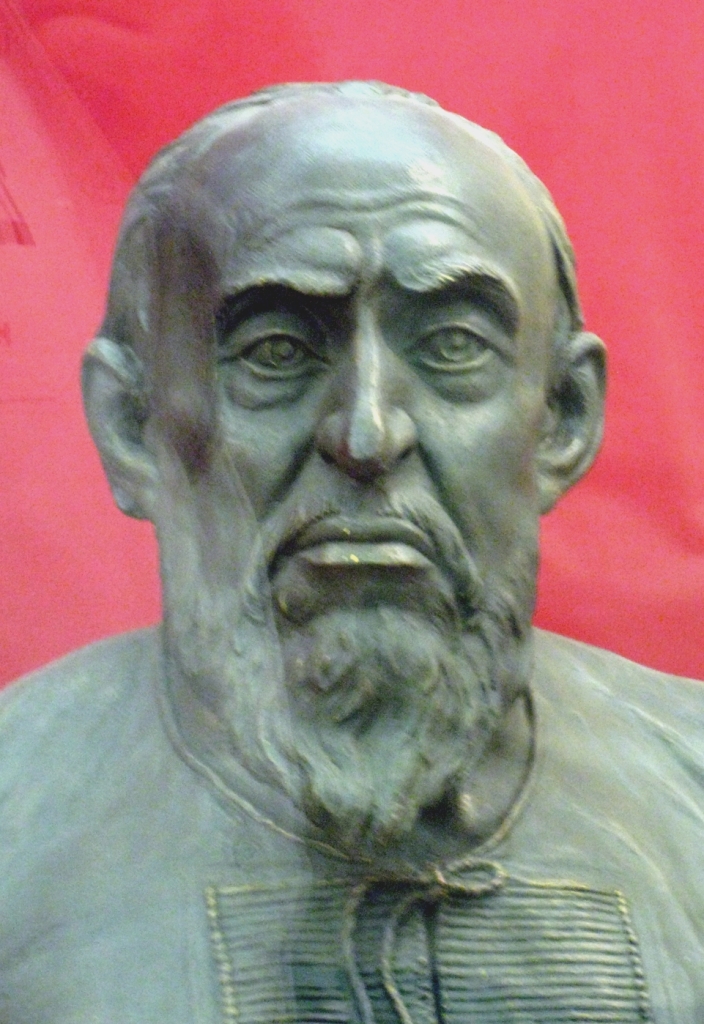
Ivan IV the Terrible: an Asiatic monarch fluent in Turkic languages
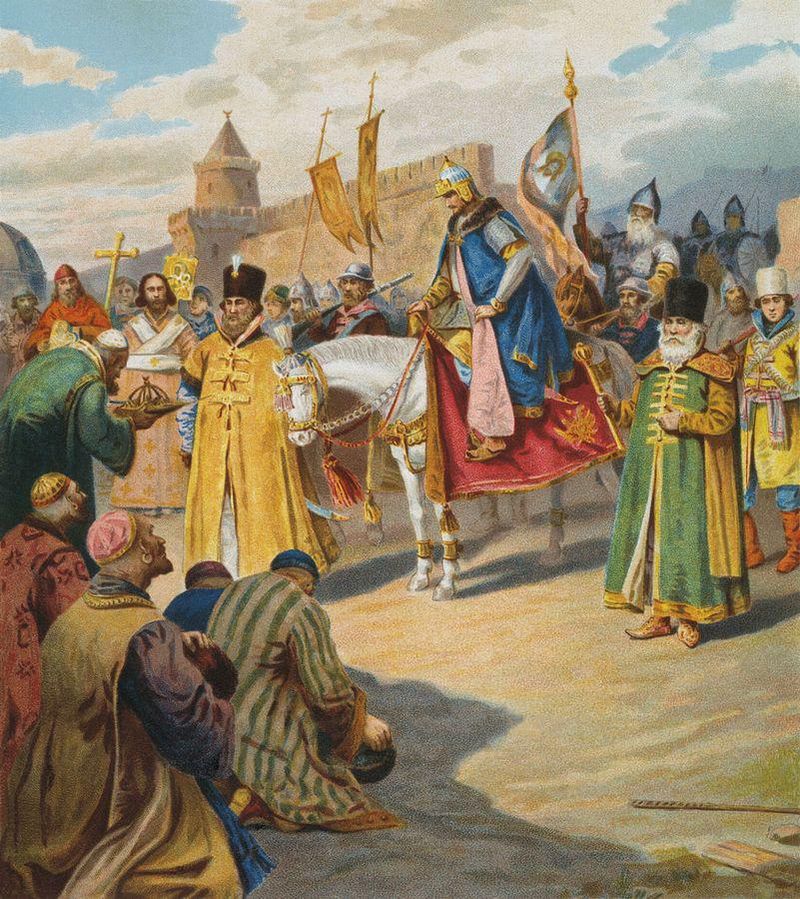
Even the way 19th c. Russian painters viewed their past fully demonstrates that they knew that their identity was Asiatic and Oriental, i.e. not Western and not European; Pyotr Korovin’s painting (1890) depicts Ivan IV in Kazan.
This topic is not easily identified, let alone understood, by today’s Russian academic, educational, intellectual and political establishment. And it constituted always an unknown and unscrutinized point that led to divisions, defeats, troubles or -even worse- failures to exploit splendid opportunities. So serious it is that it affects the Russians’ perception of their true national and imperial identity. Why? Because this was the foremost target of the pernicious Western colonial establishments as regards Russia.
All these distortions and falsifications undertaken by the major centers of power in Western Europe (Rome, Paris and London) have indeed a common denominator; this was the Western colonialism, namely the conquest of the world, and the imposition of vicious and evil intellectual, pseudo-religious, academic, educational, scientific and sociopolitical establishments, which totally dismantle and utterly destroy the local culture and civilization, faith and spirituality, traditions and behavioral systems (the way of life) wherever it is spread. As this reproach hinges on the criminal acts of the Spaniards, the Portuguese, the Dutch, the French and the English that are known as the main colonial powers, many will react pretending that Muscovy/Russia was never colonized.
This is exactly what Russians never paid attention at! In fact, what I state consists in a very subtle form of intellectual, academic, artistic, educational, scientific, ideological, socio-behavioral and imperial/political colonialism. In fact, the Western colonial establishments composed myths and elaborated falsifications that they subsequently projected onto the Russians without them realizing the trap, because they were nominally independent and eventually a militarily formidable state. The reason for this enduring but unnoticed development is double:
– first, the trap appeared as a propulsion, a praise, and a glorification of Russia; and
– second, it was linked with Russia’s apparent modernization, consolidation and fortification.
III- Western Bias: Russia’s Europeanization as De-Russification
In fact, the Western colonial establishments diffused numerous false concepts and scores of historical falsification which would drastically incapacitate the Russian state (Росийская держава/ Rossiskaya derzhava) from making most of its chances to prevail worldwide as a Christian Orthodox Oriental state inhabited mainly by Asiatic and Turanian peoples. Initially, the Western effort took the form of ‘taming’ or (even more provocatively) ‘civilizing’ the supposedly brutal Russians; in other words, they attempted to gradually ‘Europeanize’ Russia, but in this case there are four critical parameters, namely
– first, 17th c. ‘Europe’ was a nebulous, false, and truly revisionist concept that negated the true historical evolution from the Scythian, Cimmerian, Celtic, Punic and Roman Antiquity down to the Fall of Constantinople (1453) and the Treaty of Tordesillas (1494);
– second, the concept of ‘Europe’ was then overwhelmingly rejected by the outright majority of the European nations, irrespective of ethnic origin, language, religion (Islam, Orthodox Christianity, Catholicism, Protestantism), and state;
– third, in reality, this bogus-concept was essentially the method of few Western European powers to colonize the Germans, the Russians, and the numerous other nations of Eastern Europe, by destroying their cultures, traditions and faiths and by projecting onto them the vicious and evil falsehood (and version of bogus-historical narrative) that Rome, Paris and London had fabricated in straightforward denial of their Christian past; and
– fourth, cultural Europeanization was aptly confused with scientific-technological modernization, which was apparently sought after by Russian monarchs, who were willing to consolidate their vast, apparently Oriental and Asiatic, empire.
Renaissance and all the subsequent Western European intellectual movements are the epitome of worldwide revisionism or anti-historical revanchism. However, to fully comprehend the intertwined nature of Renaissance and Colonialism, one has to realize that the first to be colonized were the colonial countries themselves, namely Spain, Portugal, France, Holland and England; this is valid in the sense that these lands were the first to succumb to the evil and inhuman elites that masterminded, concocted and later spread the spiritual disease of the Renaissance, thus taking hold of the local power due to their schemes (initiating kings, noblemen and priests into evil religious orders).

Confusing modernization with Europeanization, Peter I helped Europeans colonize his own country, thinking that this torturous deformation of Russia’s identity, nature and character could ever be beneficial.
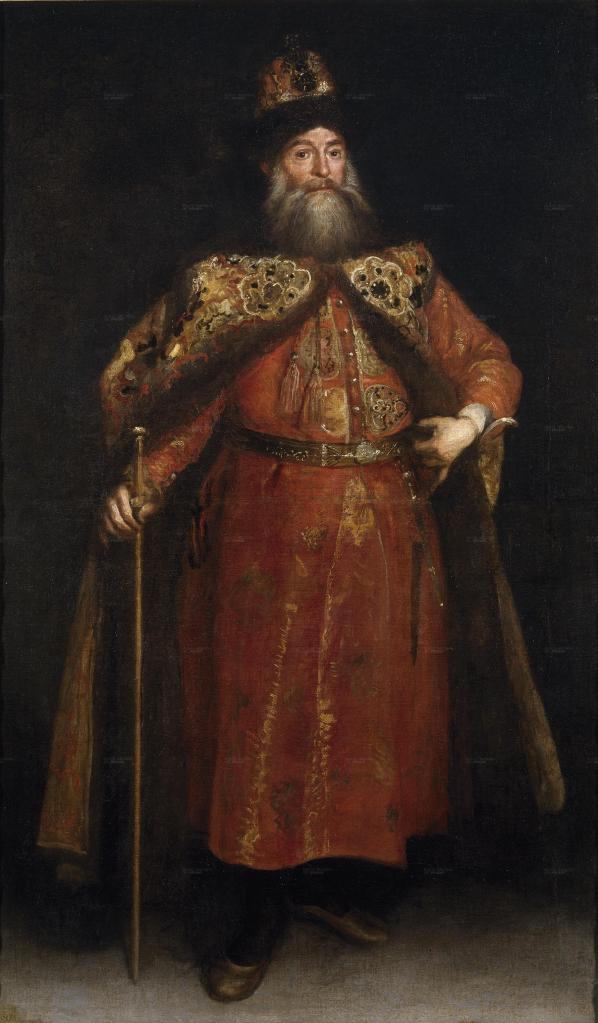
Pyotr Potyomkin: an entirely Oriental and Asiatic, Russian diplomat and statesman
When it comes to Russia’s enduring Europeanization, which proved to be absolutely calamitous for all Russians and for the Russian state’s natural interests, the kingdom of France played a great role, already before Peter I the Great (Пётр I/Пётр I Алексеевич; 1672-1725). From the days of Jacques Margaret (1565-1619), Jacques Auguste de Thou (1553-1617) and Pyotr Potyomkin (also spelled Potemkin; Пётр Ива́нович Потёмкин; 1617-1700 / distant relative of Grigory Potemkin, the 18th c. statesman in whose honor was named the early 20th c. Battleship Potemkin), dense series of cultural, intellectual and imperial exchanges started taking place.
First, travelers wrote about Russia, pejoratively depicting the country and the people as purely ‘backward’; simply because corruption, faithlessness, evilness, debauchery and lawlessness did not have any place in the Russian Empire, and the local morals had not softened as in Western Europe, Russia appeared to those Western Europeans as ‘uncivilized’. Then, historians and linguists, philologists and historians of art started therefore writing about the vast empire, which they wanted to represent as they wished it to be, and not as it truly was. Furthermore, scores of Italian architects were dispatched to Russia, whereas countless German princesses married Russian noblemen and princes only to corrupt the land from the top to the bottom. About:
https://en.wikipedia.org/wiki/Jacques_Margeret
https://en.wikipedia.org/wiki/Jacques_Auguste_de_Thou
https://en.wikipedia.org/wiki/Pyotr_Potemkin
http://www.saint-petersburg.com/famous-people/great-italians/
In fact, what even today’s Russians seem to easily forget is that, due to the need of modernization, several Russian czars opened the way to Europeanization, which was tantamount to utter de-Russification. Catherine II {1729-1796; Екатерина II; born as German princess Sophie of Anhalt-Zerbst / София Августа Фредерика фон Анхальт-Цербст-Дорнбург (Романова)} had to appear at times in the Russian national costume (also involving veil) and at times in her Western dresses. About:
https://en.wikipedia.org/wiki/Catherine_the_Great
https://ru.wikipedia.org/wiki/Екатерина_II

The true Catherine II: a Western libertarian
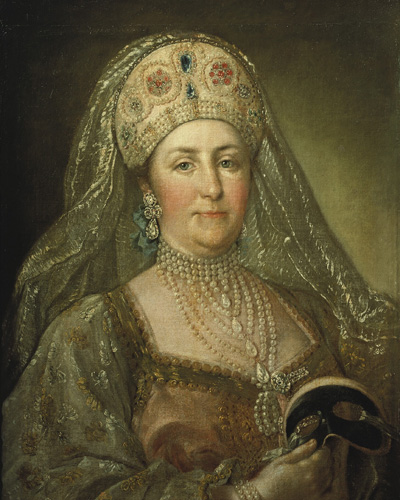
Catherine II masqueraded as Russian
IV- Where does the Fallacy of European Russia End?
It caused an undeniably deep division inside the Russian Empire, because the Christian priests, monks and laymen reacted to what they considered rather as Satanization of Holy Russia. If I expanded on the topic, it is due to the fact that the aforementioned situation still today affects Russia directly. For instance, when Putin speaks positively about Peter the Great, this constitutes in fact an oxymoron, because at the same time, the Russian president opposes Russia’s Europeanization today. But this is the whole problem: in fact, Peter ‘the Great’ (?), in his time, was acting in the exactly opposite direction from that of Russia’s incumbent president.
I fully support President Putin’s efforts to block the spread of Western lawlessness, inhumanity, corruption and putrefaction in Russia; more importantly, the outright majority of the Russians today support him in this effort, irrespective of faith, ethnic origin, language, and culture. However, the truth is that Peter I acted differently (and very mistakenly as per my evaluation), willing to oppose and diminish the role of the Russian Orthodox Church in the Russian education and culture. So, I have to admit that Ivan the Terrible, Tamerlane, Stalin or even Genghis Khan are far more suitable prototypes and heroes for today’s Russia in the great national effort to defend the land from the evil intentions of the criminals who rule the West. Then, the fact that this discrepancy obviously exists today only jeopardizes Russia’s national interests and clarity as regards the national identity of the great country.
——————————————————-
The greatest Russians of all times: Genghis Khan (above), Timur/Tamerlane (middle) and Stalin (below)

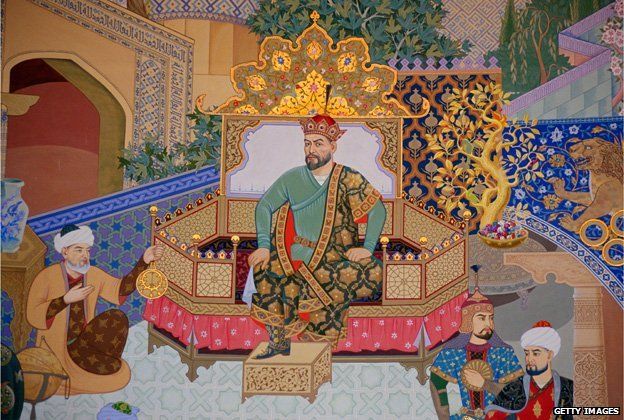

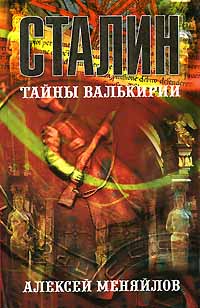
——————————————————-
In a way, it would make sense if Russia’s liberal opposition, which consists in a shame and a disgrace for all Russians, expanded much on Peter I as the model. If they want to introduce in Russia today the Western European and North American decadence, depravity and decay, thinking that this is ‘modernization’, it is Peter I who took similar measures before 300 years openly supporting the presence and spread of Freemasonic lodges in his empire; but this development had negative impact on Russia’s pledge to the Holy Rus, the Kievan kingdom. About:
Putin compares modern-day Russia to the times of Peter the Great on tsar’s 350th anniversary
https://www.academia.edu/695748/Freemasonry_and_the_Occult_at_the_Court_of_Peter_the_Great
This is a nonsensical Western propaganda for idiots:
https://www.wilsoncenter.org/blog-post/putin-endangers-russias-future-just-his-hero-peter-great-did
The scrupulously elaborated and systematically projected onto all the successive Russian establishments (Imperial, Soviet and Republican) concept of Russia as a European nation is the Western countries’ most fallacious distortion and most pathetic falsity about the vast country. It repeatedly damaged gravely the national interests of Russia. As a forgery, it helps identify the real intentions of Russia’s permanent enemies; to them, Russia would then be ‘good’ if limited in a portion of European Russia’s territory, let’s say in the triangle St Petersburg, Volgograd and Nizhny Novgorod, thus sending Moscow back to the 1500s.
The Western fallacy of a ‘European Russia’ provides with an expiry date for what the Russian Empire has always been. With Russia ‘becoming’ a state double the size of Ukraine, with the entire Caucasus region in flames, with an independent Tatarstan (enlarged with the annexation of Bashkortostan, Chuvashia and Udmurtia), and with the secession of a Karelia-Komi-Nemets ‘state’ in the North, the path will be open for the detachment and colonization of Siberia and Northern Asia by the criminal Western European and North American colonial gangsters.
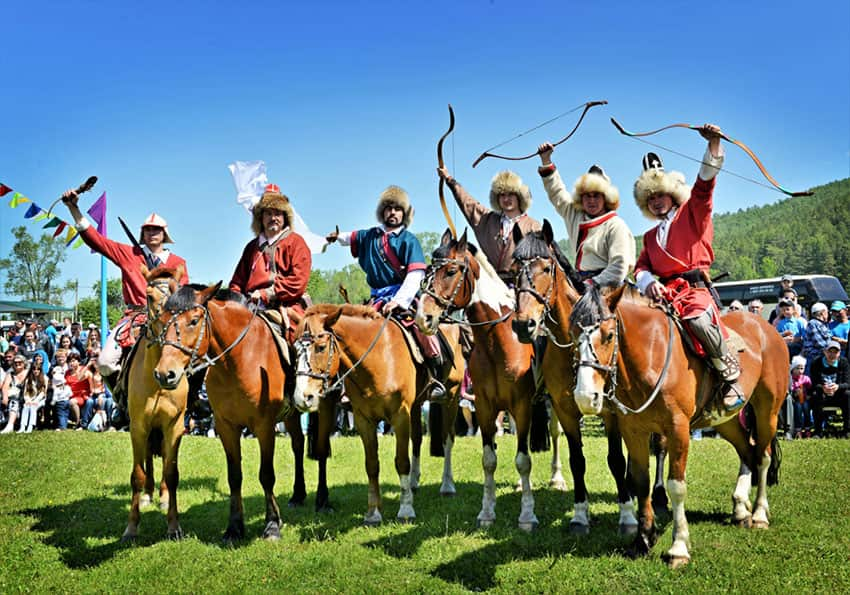
Bashkirs
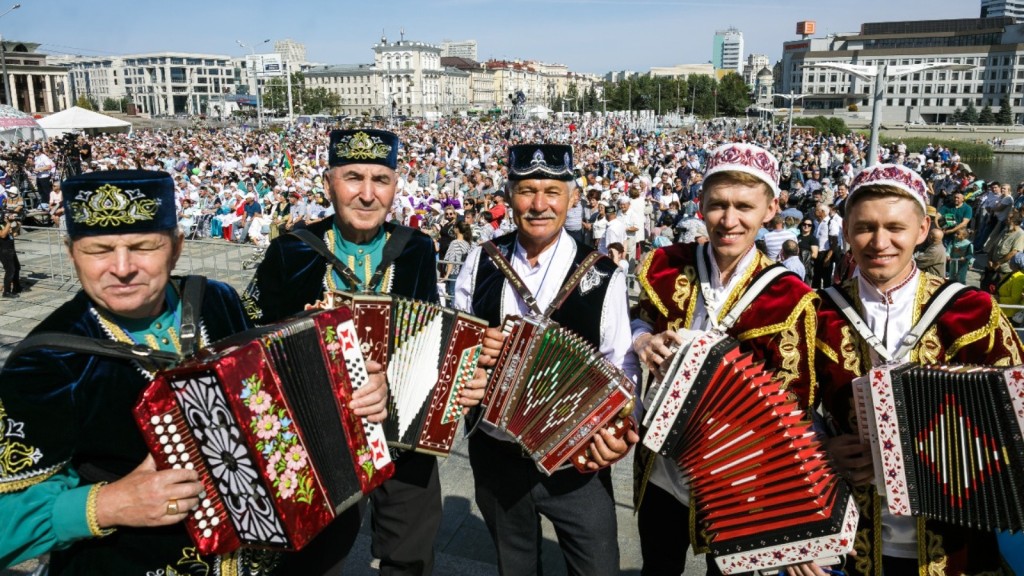
Tatars
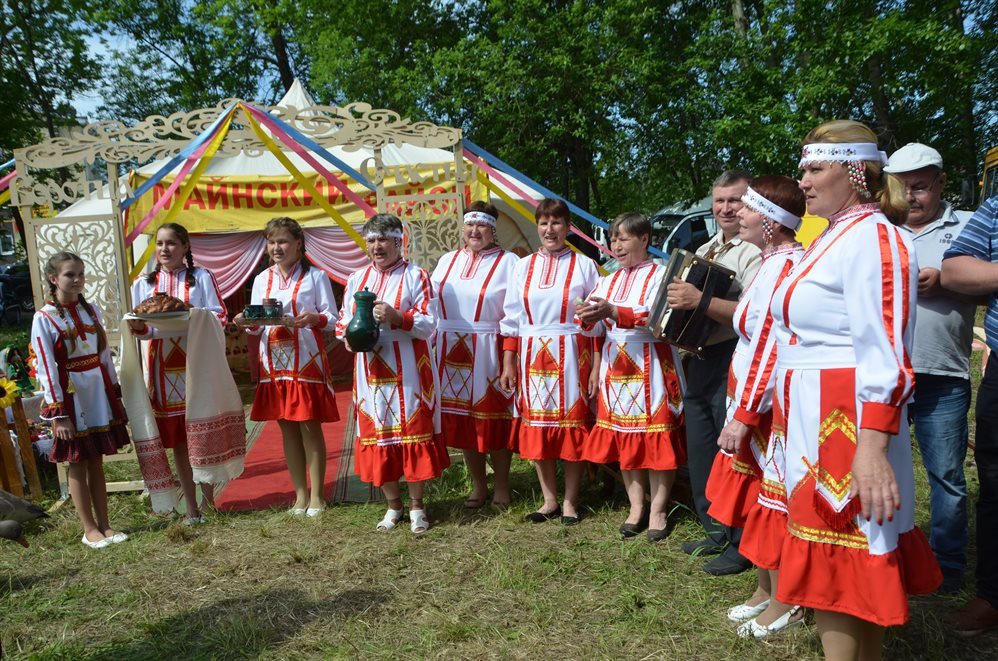
Chuvash
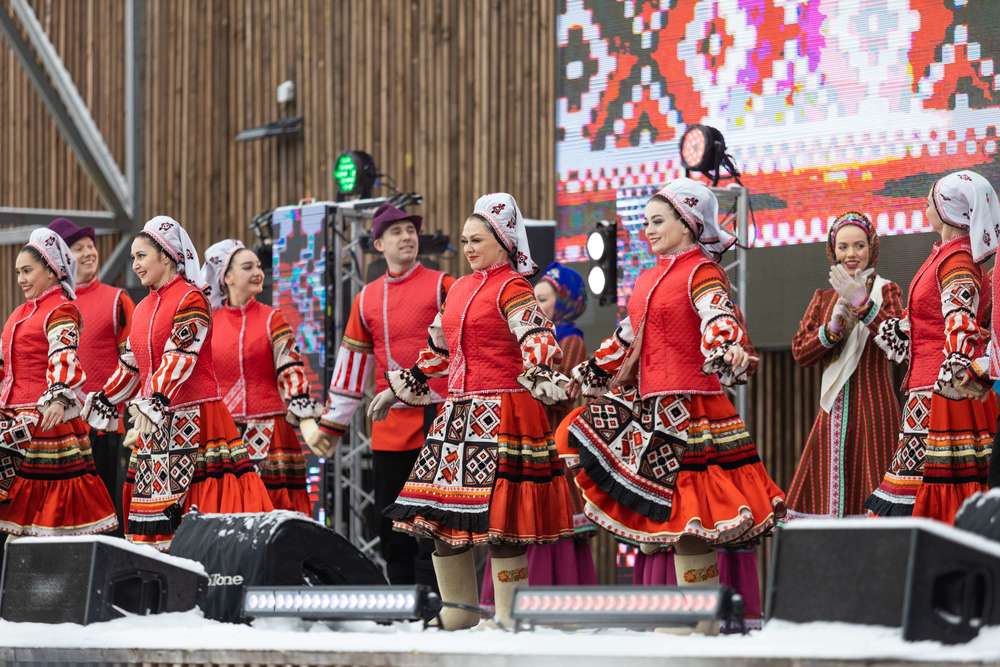
Udmurts
About:
https://en.wikipedia.org/wiki/Tatarstan
https://en.wikipedia.org/wiki/Bashkortostan
https://en.wikipedia.org/wiki/Chuvashia
https://en.wikipedia.org/wiki/Udmurtia
https://en.wikipedia.org/wiki/Northwestern_Federal_District
https://en.wikipedia.org/wiki/Southern_Federal_District
https://en.wikipedia.org/wiki/North_Caucasian_Federal_District
https://en.wikipedia.org/wiki/European_Russia
V- False Identity for Russians means Defeat in the Great Game
In addition to fallacy, deception, corruption and historical forgery, the existence of ‘colonial empires’ involves a lengthy and meticulous agenda for all continents, target prioritization, and -above all- deception continuity and, if necessary, adaptation. Whereas the British and the French colonial empires were not dissolved but merely transformed after the end of WW II (with scores of unsuspicious, credulous, and subservient Asiatics, Eastern Europeans, Africans and Latin Americans endlessly enrolling to ‘study’ in the colonial universities-factories of falsehood), the dissolution of the Russian (or Soviet) Empire became a constant parameter of the perverse and criminal expansionism of the Western powers. After the dissolution of the Soviet Union, they insist on the dissolution of the Russian Federation that they persistently depict as a ‘vast’ Russian ‘Empire’. To the Russians, this sounds as merely Western propaganda, and this is right – but only up to a certain extent. Quite unfortunately and more importantly, this is also historiography, colonial conceptualization, and foreign policy target.
The ‘reason’ that the Western academics, experts, diplomats and statesmen evoke in order to possibly justify their claims and demands, policies and targets is founded on the concept of ‘European Russia’ that they had long created and projected onto their agents (or interlocutors or sympathizers of ‘brothers’ or friends) in Imperial Russia. In 1850 or 1900, these naïve Russians, who believed in the good intentions of the evil Western administrations, could not understand where this vicious concept leads to; had they survived until 2022-2023, they would have understood very clearly the erroneous choice that they had made.
Who were these agents of the Western establishments?
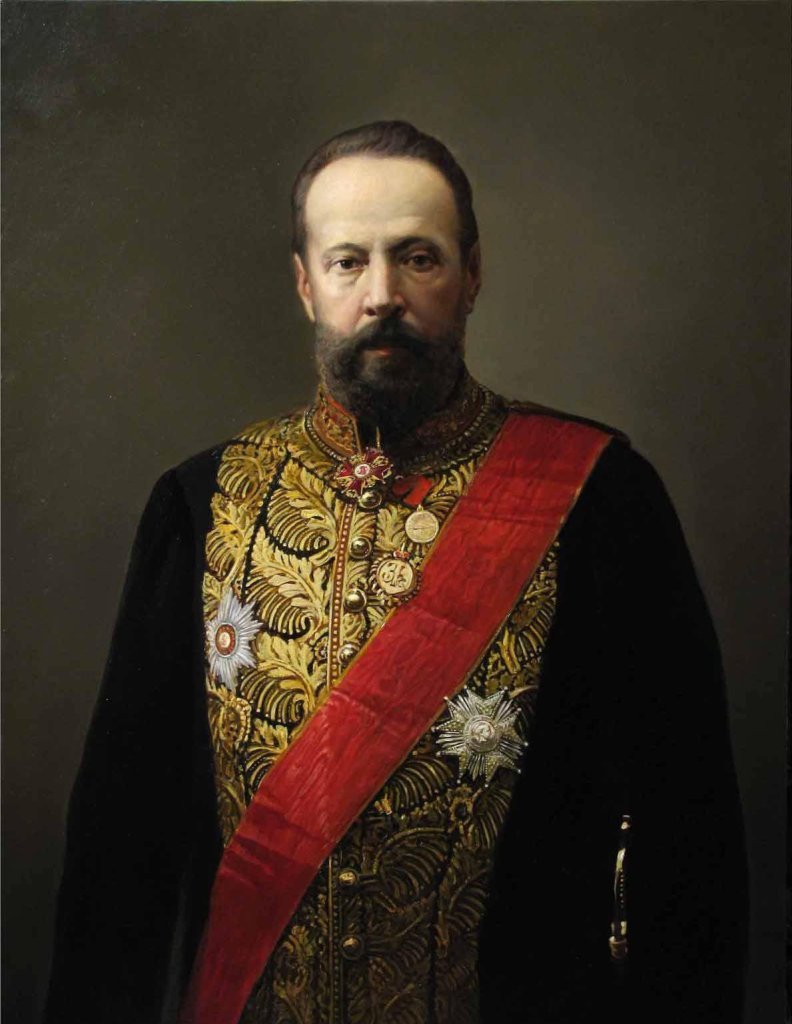
Sergei Witte
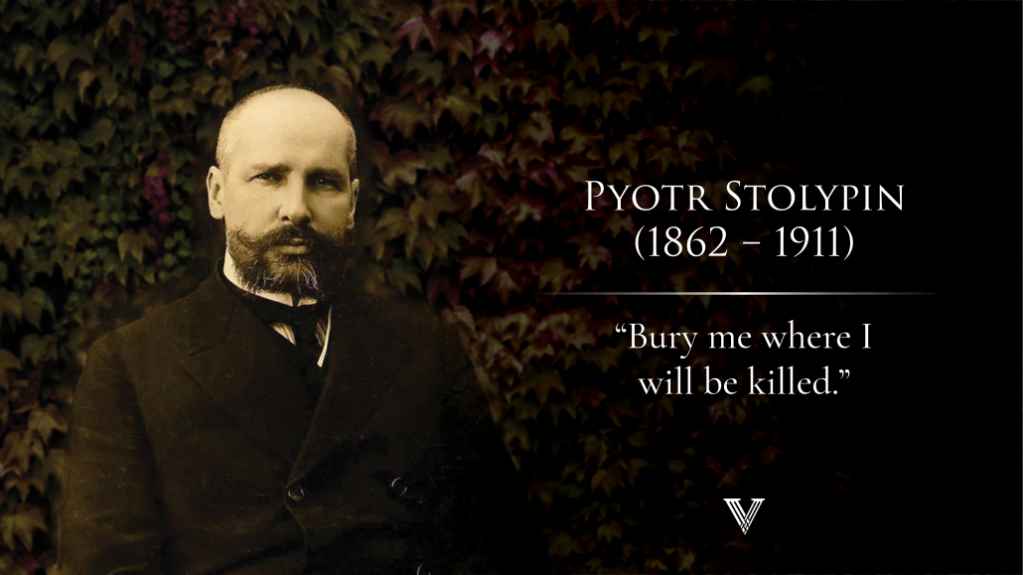
They were high rank Russian academics, noblemen, generals, and quite often members of the imperial family; when it comes to German princesses, they were the embodiment of Russia’s Europeanization, because Germans, who are also an Asiatic origin nation, had been Europeanized, i.e. corrupted, first. Politicians and members of the State Duma (Государственная дума/Gasudarstvennaya Duma), ministers and even prime ministers, the likes of Witte (Sergei Witte/Сергей Юльевич Витте; 1849-1915), Stolypin (Pyotr Stolypin/Пётр Аркадьевич Столыпин: 1862-1911, assassinated) and, last but not least, Kerensky (Alexander Kerensky/Александр Фёдорович Керенский; 1881-1970), were the leading agents of the Western states and establishments, not in the sense of payroll agent of foreign countries, but due to their confusion between modernization and Europeanization.
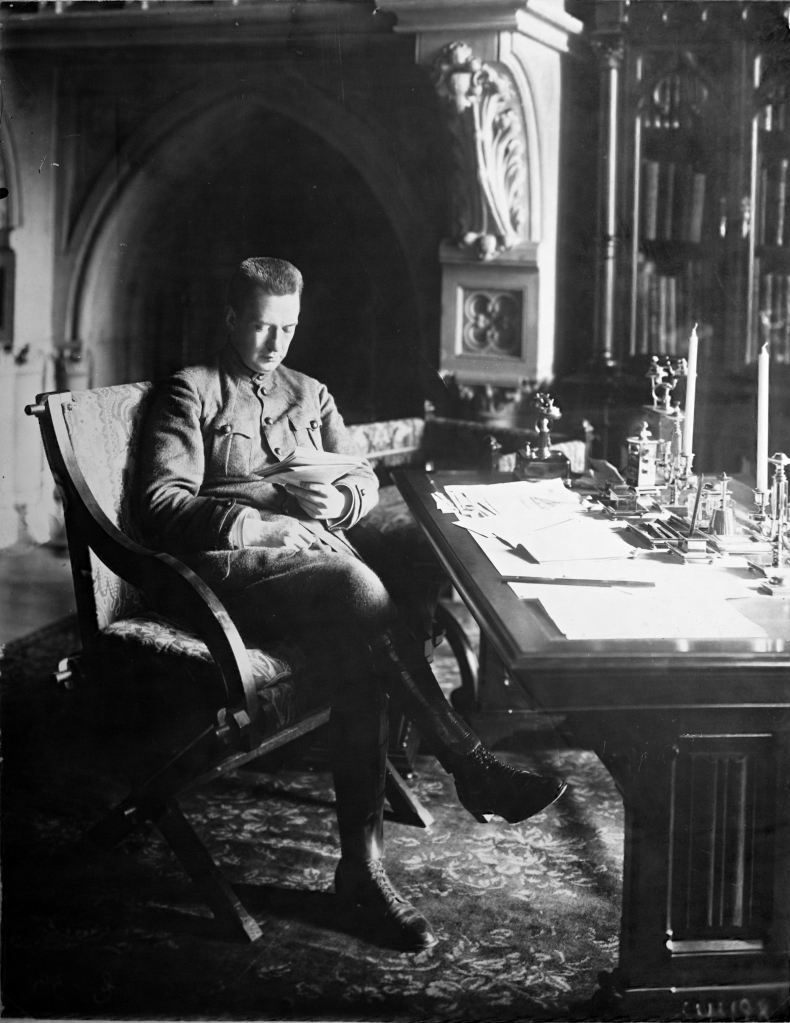
Alexander Kerensky
Later, after the October revolution, Lev Davidovich Bronstein (also known as Leon Trotsky/Лев Троцкий; 1879-1940) became the main champion of Russia’s foremost Europeanization; his paranoid theory of permanent revolution is the quintessence of Western European colonialism. In fact, by this term, Trotsky merely denoted the accomplished status of Asia’s, Africa’s and Latin America’s Europeanization. English colonials had a rather shorter way to describe it: “Make the world England”.
https://www.hamiltonfortexas.com/video-6
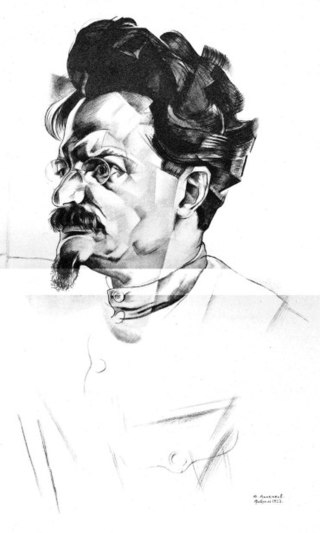
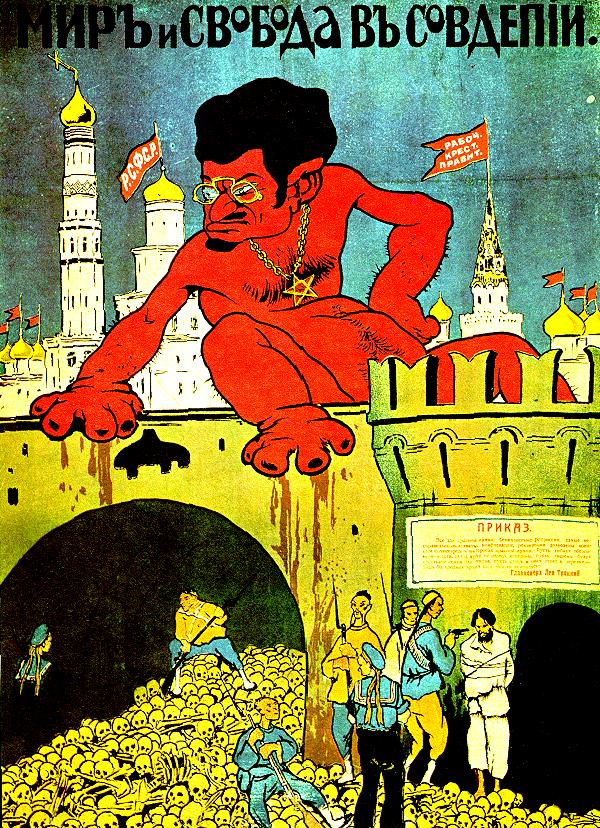
Villainous rascal and paranoid gangster Lev Davidovich Bronstein, alias Trotsky
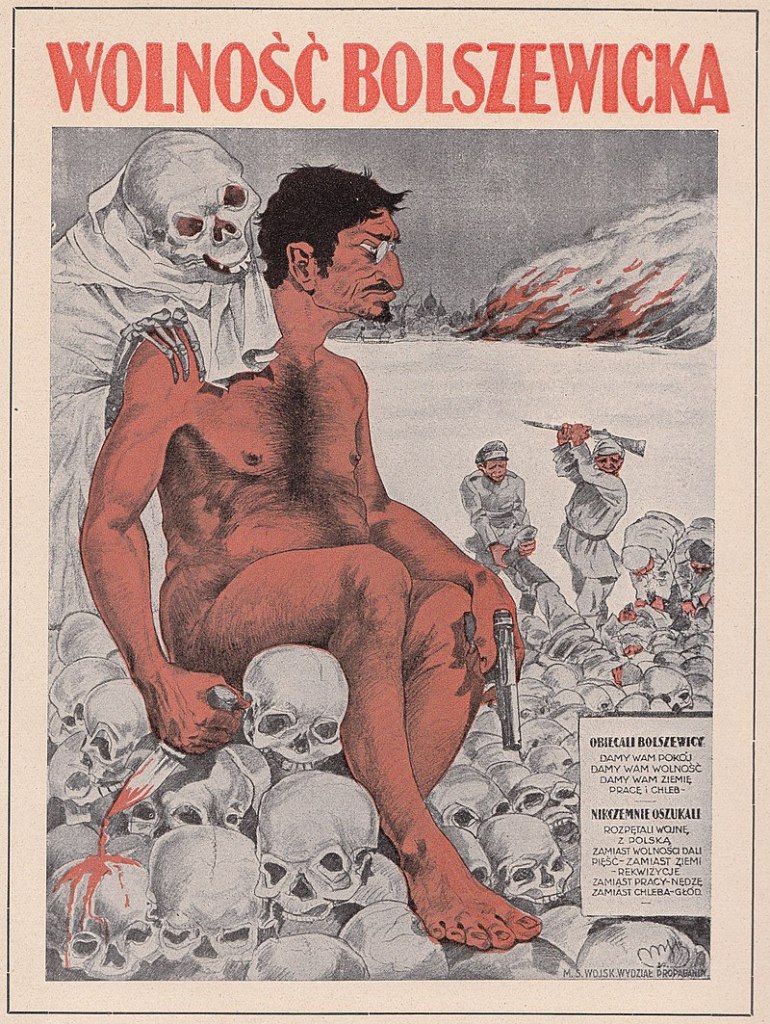
It is not a coincidence that Khrushchev’s de-Stalinization also involved Ukraine’s annexation of Russian Crimea; it was apparently due to Khrushchev’s latent but extant Trotskyism. This was also attested in the case of Khrushchev’s attempt to breach the territorial integrity of the Kazakh SSR. About:
Kazakhstan from the Göktürks (Celestial Turks) and Genghis Khan to the Jadid Intellectuals to Nursultan Nazarbayev, ch. XVIII unit c:
The following entry is filled with inaccuracies, oversights, and distortions:
https://en.wikipedia.org/wiki/Transfer_of_Crimea_in_the_Soviet_Union
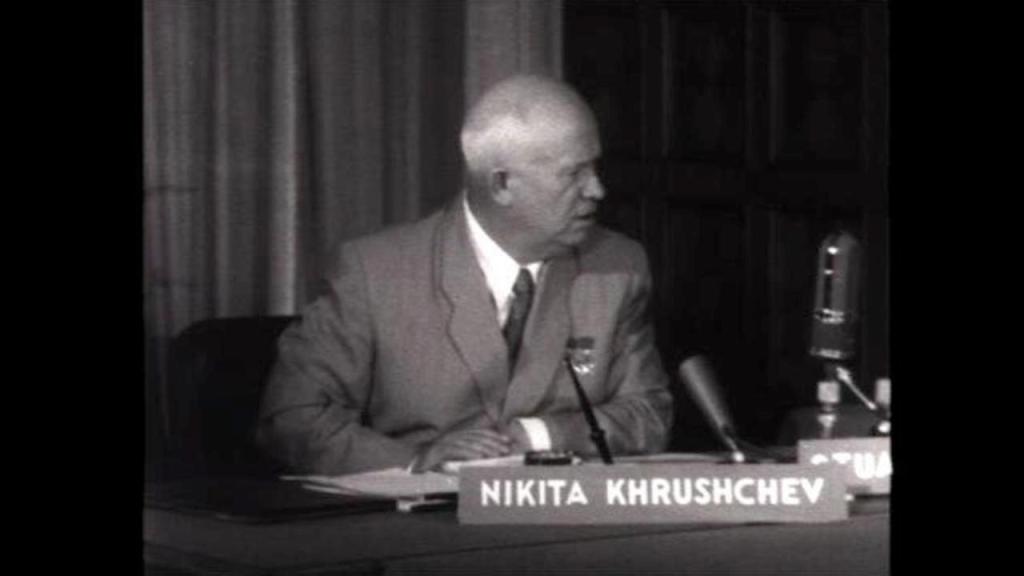
A latent form of Trotskyism
What matters most in this regard are not the persons, but the calamitous results brought about following the projection of this malicious concept onto Russia; one has also to take into consideration the opportunities that the Russian Empire lost due to the confusion between technological modernization and Europeanization that prevailed in the minds of the Russian elites.
To many it may sound bizarre that Rome, France and England first, and the US at a later stage, supported and promoted or tolerated the expansion of the Russian Empire during several centuries (16th-19th) only to plan to split and dismember it at a later stage; however, this colonial attitude is not strange at all. It only demonstrates the permanent and menacing character of the Western colonialism. The Imperial Russian expansion in the Black Sea and the Caucasus regions, in Northern and Northeastern Asia, and later in Central Asia was aptly utilized by the colonial powers, England and France, as an instrument necessary for the weakening of the Ottoman Empire, Safavid-Afshar-Qajar Iran, and Qing China.
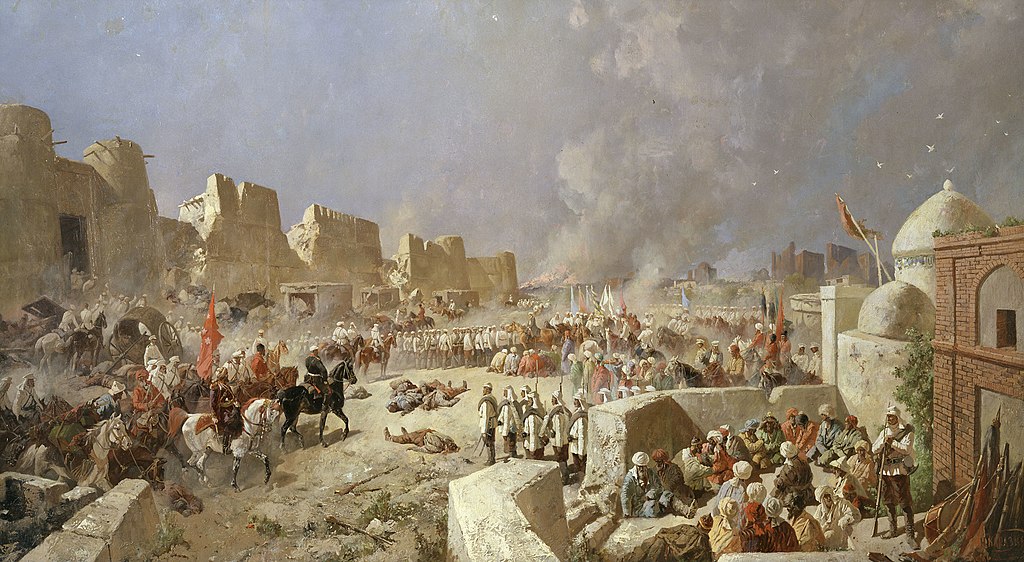
A critical moment of the Great Game: the Russian invasion of Samarkand (1868); from the painting of Nikolai Nikolaevich Karazin (Николай Николаевич Каразин; 1842-1908)
To view it correctly, the inception and the projection of the false concept of ‘Russia as a European Empire’ is tantamount to declaration of war against Russia; historically, it consists in the birth certificate of the Great Game. It definitely constitutes an act of enmity against Asia in its entirety and against all the historical nations, cultures, and empires of Asia, which -throughout the millennia- civilized the barbarians of Asia’s most worthless and most pathetic peninsula: Europe.
VI- The Fall of the Romanov: due to the False Concept of ‘Russia as a European Empire’
In brief, the subtle but venomous, slow and multilayered projection of the concept of ‘Russia as a European Empire’ onto the Russian elites prevented the czars from forging an alliance with the sultan at Constantinople, the shah at Esfahan, the Great Mughal (Shahanshah-e Hindustan/شاهنشاهی هندوستان) at Delhi, and the Tianzi (Son of Heaven/天子) at Beijing in order to set up a common front against the European colonial expansionism in Asia and drown the colonial gangsters in the sea.
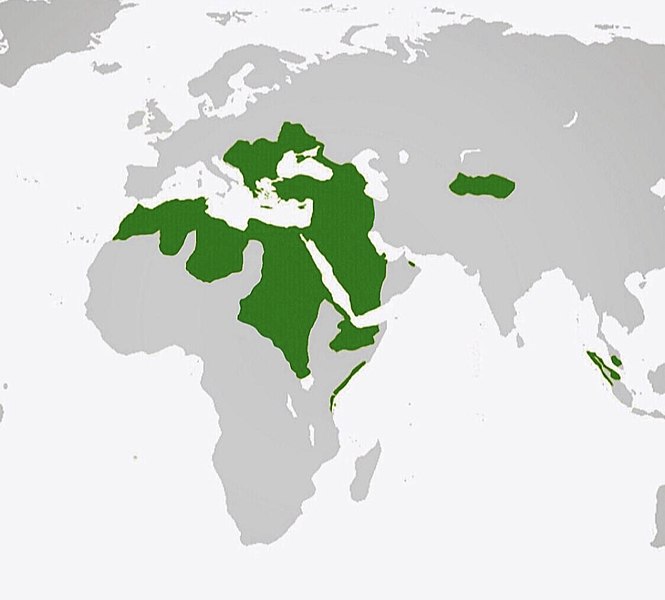
Ottoman Empire (end 16th c.)

Safavid Iran (early 16th c.)
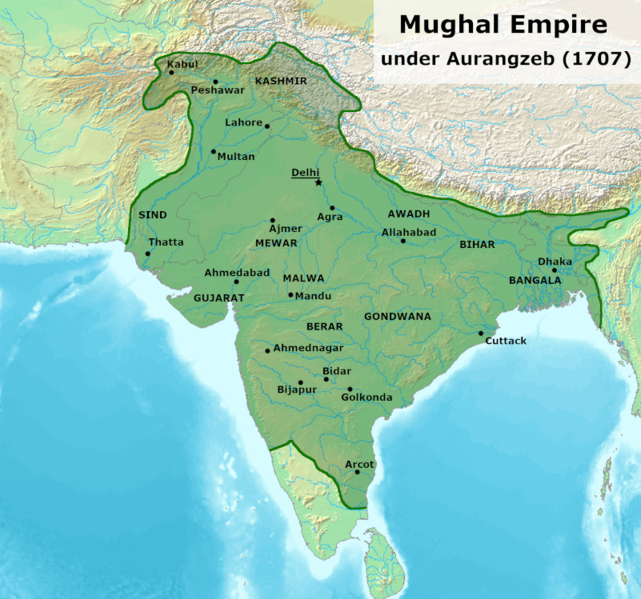
Mughal Empire (early 18th c.)

Qajar Iran (19th c.)
The aforementioned point alone stands as convincing proof that Russians today must rewrite their National History, removing Western European revisionism, distortions, fake concepts, and historical falsehood, in order to allow for a veracious, true and accurate perception of Russian History; this would definitely lead to the formation of a consummate, all-encompassing, and genuine Russian national identity, which would be the solid foundation of every decision-making process.
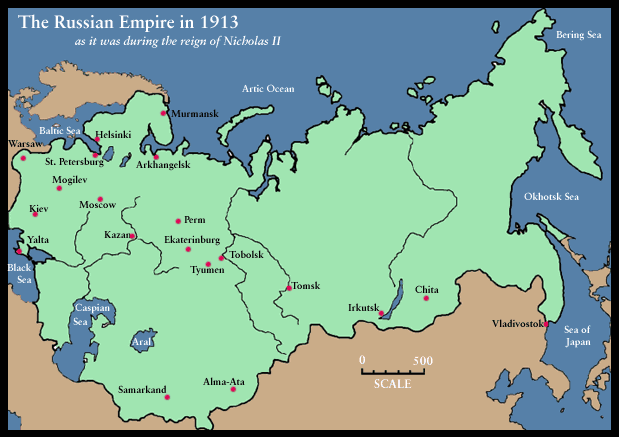
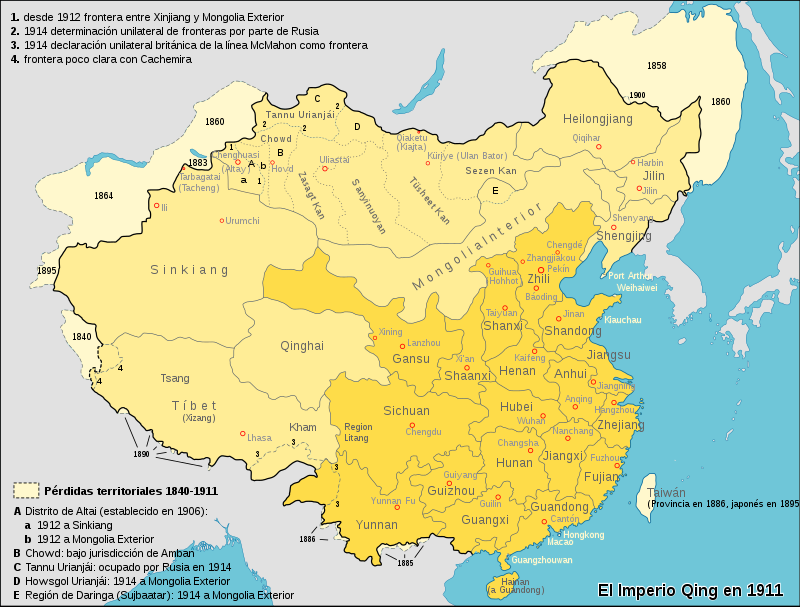
Qing China 19th-early 20th c.
An example of the extremely calamitous impact that a) the false concept of ‘Russia as a European Empire’, b) the erroneous perception of the Russian national identity, and c) the mistaken, hitherto colonially written History of Russia exerted on the imperial decision-making is Nicholas II’s alliance with France and England before and during WW I. Acting under the confusion triggered by the aforementioned parameters, the last of the czars, although recently canonized, led his empire from defeat to defeat, his people to certainly undeserved death, and his throne to an end.
It is impermissible for a continental empire to ever make an alliance with maritime powers, which by definition constitute the embodiment of falsehood, inhumanity, barbarism, and evilness; this fact leads to destruction, because as an expression of the sea, i.e. the aboriginal chaos, sea powers play always a destructive role in the human affairs until they are annihilated – which is what they always deserve.
World History, Spiritual Revelation, and Human Civilization are the exclusive domain of continental empires, land kingdoms, and societies closely related with plains, plateaus, hills, mountains and valleys. Coastal states existed, but they never generated civilizations; at their best, they rather reflected the values, the concepts, the virtues and the principles that were identified, cherished and defended first by societies developed far from the sea.
In the eve of what is, conventionally and mistakenly, called World War One (in fact, it is an episode of the Great Game), Russia and Austria-Hungary were ostensibly continental empires; Germany and Italy, in spite of their, then recent, colonial expansion in Africa were continental empires that occupied overseas lands only to prevent England and France from further enlarging their monstrous colonial empires that spread death, oppression, corruption and inhumanity worldwide. This means that, after the disintegration of the Spanish and Portuguese colonial empires, the only maritime powers were England and France and, to lesser extent, Holland and Belgium.
Imperial Russia’s misfortunate alliance with Paris-controlled Serbia was an awful trap. All other circumstances and instances, events and incidents cannot weigh-in on a proper decision-making, when the fundamental principles and the theoretical prescriptions impose a resolute approach based on identity consideration, foe identification, and strategic alliance evaluation.
The alliance with France and England was for Russia the stupidest decision ever made by any czar, also consisting in the Act of Death Certificate for the Romanov dynasty. England, as an island, cannot exist as an independent state as per the criteria of every historical continental empire. If one takes into account the despise with which all the great historical rulers and emperors from Sargon of Akkad to Alexander the Great to Tamerlane looked down at all the islands in general, one gets conclusive evidence about the worthlessness of the islands in terms of civilization, spiritual authority, and imperial rule.
Similarly, ever since her devilish inception, France was the foothold of a maritime monster that unfortunately Justinian I and General Belisarius failed to eliminate; the Merovingian myth details in length the abominable deeds of the Quinotaur, the maritime beast-ancestor of the villainous Merovingian dynasty, thus fully unveiling the evil nature of that state irrespective of the form that it may take. Unfortunately, Nicholas II Romanov failed to read the Chronicle of Fredegar to possibly fathom the Anti-Christian nature and character of the disreputable state of which he disastrously made Holy Russia an ally! About;
https://en.wikipedia.org/wiki/Merovingian_dynasty
https://en.wikipedia.org/wiki/Chronicle_of_Fredegar
https://en.wikipedia.org/wiki/Quinotaur
Quite contrarily, if Russia was fully and irrevocably perceived as an Asiatic Empire, the continental dimension of Holy Russia would lead Nicholas II to an alliance with the Kaiser, the Emperor of Austria-Hungary, the Sultan at Constantinople, and the Shah of Qajar Iran. This alliance would be the only normal and natural expression of Russia’s historical and geographic identity. The ensuing result would be of entirely breathtaking and spectacular dimensions.
Having no apparent need to maintain armies close to the Imperial German, Austrian-Hungarian, and Ottoman borders, Romanov Russia and Qajar Iran would eliminate the ahistorical bogus-state of Afghanistan, which is a filthy, devilish English colonial invention and fabrication (geared to merely weaken Iran); soon afterwards, no less than five million (5.000.000) Russian and Iranian soldiers would overwhelmingly invade India, irreversibly obliterating the criminal colonial presence of England in South Asia, triumphantly liberating the local multi-ethnic populations, and effectively establishing fraternal relations among the adepts of all the different religions, cults and faiths.
With the inevitable defeat and final division of France (between Germany and Italy), Russian, Austrian-Hungarian and Italian regiments would irrevocably eradicate the presence of Anglo-French colonials in Egypt, Sudan and the Eastern Mediterranean. After the prompt pacification of the three continents, an enormous German-Russian-Spanish-Italian operation would be undertaken against the ‘British Isles’ to totally eliminate every notion of insular rule and independent state in England.
Nicholas I’s total failure to understand the Asiatic nature of Russia throughout the millennia and his inability to exert continental force against the maritime powers’ treachery, evilness, and putrefaction caused Russians not only a terrible defeat in WW I, a Civil War, and an unnecessary regime change, but also a terrible bloodshed during WW II, a Cold War, the needless disintegration of the USSR in 1991, and ever since, the absolutely unneeded fratricidal conflict in Ukraine – an entirely Russian land and population that the sea powers attempt to corrupt.
The maritime powers’ evilness is identical with marine erosion; they appear friendly and innocent in order to cheat and they show their true face later. At the end, the Russians will understand the real meaning of the verse: “Moscou, les Plaines d’Ukraine, et les Champs-Élysées“. In fact, it has absolutely nothing to do with either the French or the Ukrainians and the Russians. It simply means that in Moscow and in the plains of Ukraine there must be as many brothels, cabarets, night bars, sexual debauchery, and inhuman anomaly as in les Champs-Élysées.
————————————————————–
Download the article in PDF (text only):
Download the article in PDF (text, pictures, legends):

